Best Time to Visit South America
South America is a great travel destination all year round. The best time to visit South America depends on the seasonal climate of the country you’re visiting, the activities you’re interested in, and the larger crowds and higher costs during peak tourist seasons.
In contrast to North America, the seasons of the southern hemisphere of South America (Argentina, Chile, Patagonia) are reversed with the summer months falling between November and February with winters between June and August. The northern hemisphere of South America (Ecuador, Northern Brazil, Colombia) follows seasonal changes more consistently with North America.
For example, the best time to visit Patagonia in the south is between November and February where harsh winters during June through September will close down most local operations. The best time to visit Peru is during the dry season between May and October with blue skies and warmer temperatures. Visitors will want to avoid the colder rainy season between January and March.
Clearly, South America weather plays an important role in planning a trip to South America. The type of activities and excursions you’re planning are also a primary factor in deciding when and where to visit. Check out our top 15 South America tours for custom vacation ideas from our travel experts. Each tour includes recommendations of the best activities and excursions with each destination.

My Recommendation
“In general, the best time to visit South America is in October and November as the springtime weather conditions make it comfortable in the cities, beaches, and mountains and nature’s beauty is on full display. Flowers are blooming, wildlife is much more active, and seasonal crowds and travel costs are fairly moderate.”
Rebecca Deering
South America Travel Expert
Best Places to Visit in South America – December, January, February
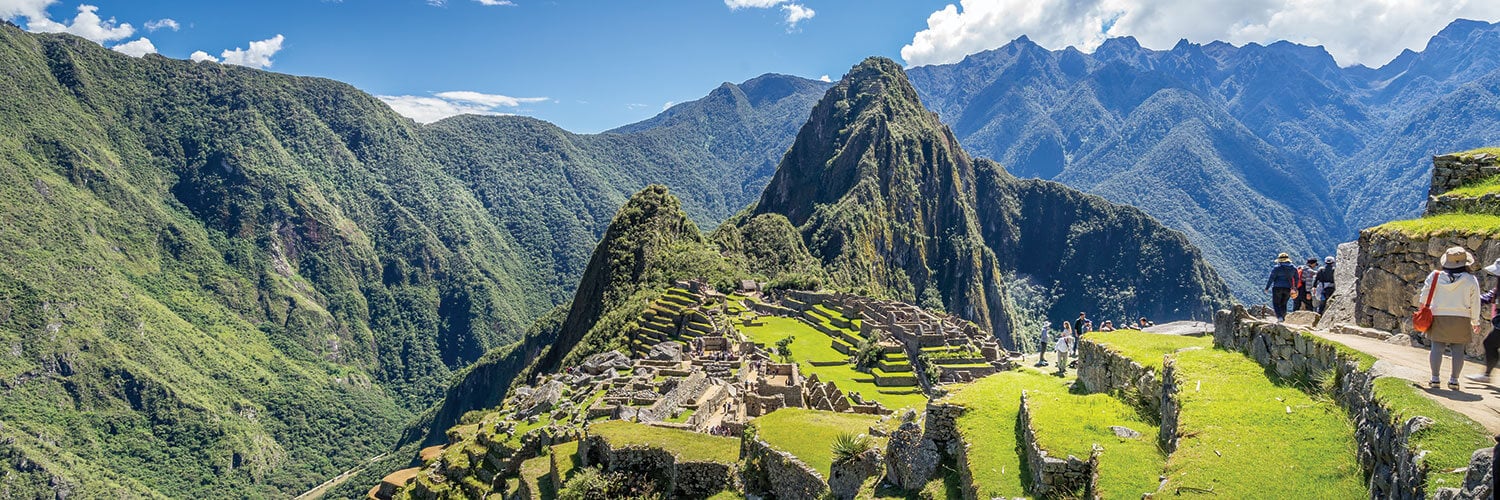
Summer in South America is from December to February. During this time, the continent enjoys warm temperatures, long days, and excellent conditions in the evenings for nighttime exploration.
In the summer season, travelers and locals alike enjoy the coastal towns for their fantastic beaches, ideal for lounging and sunbathing. Fernando de Noronha and Jericoacoara are two of our favorite northern beaches in Brazil.
In addition to the great weather, some of the world’s largest festivals take place in South America during the summer, such as Carnival in Brazil. In major metropolises, events from outdoor concerts, boutique markets, and even parades are a regular occurrence.
For the more adventurous and nature-oriented, the sunnier weather and longer days make destinations like Patagonia an ideal time to see some of the world’s most incredible natural wonders. However, in the Andean regions, like Bolivia, Peru, and Ecuador, summer is often rainy, ushering in their wet season.
Best Time to Visit Brazil
Brazil is largely tropical, leaving travelers sunkissed, relaxed, and refreshed. It is one of the best destinations in South America for nature. Even in its large bustling cities, like Rio de Janeiro, nature surrounds you. Butterflies inhabit the city streets and Tijuca Rainforest is scattered around the city. In northern Brazil, enjoy white-sand, secluded beaches, or embark deep into the dense Amazon Rainforest. With three rainforests and the Pantanal wetlands, Brazil is perfect for seeing South America’s rare and unique species of flora and fauna.
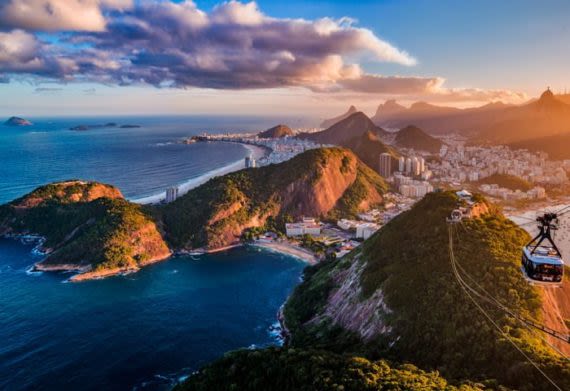
Best Time to Visit Ecuador
Ecuador has a variety of climates, regions, and landscapes, so it can be hard to determine when the best time to visit Ecuador is. Like most destinations, it depends on what you would like to do and the regions you would like to see and your preferences.
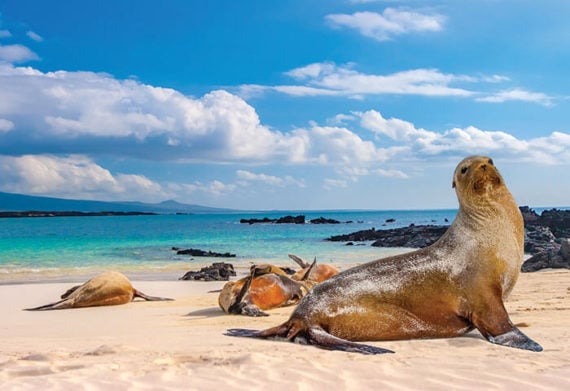
Best Time to Visit Antarctica
The Best time to visit Antarctica is the region’s summer period when the wildlife is the most active. This about November through March when the ice starts to break up enabling better access for ships. In November is when you may have a chance of seeing large icebergs which provide guests amazing photography opportunities. Travelers looking for the best deal might want to consider the beginning and the end of the season as the prices will be a little better. Antarctica is very popular and growing destination though, so let’s plan a trip to Antarctica before it gets too crowded!
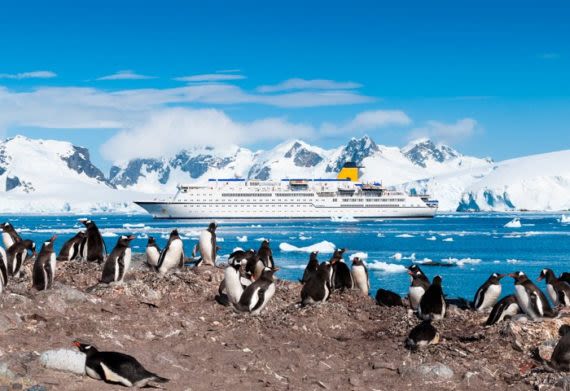
Best Places to Visit in South America – March, April, May
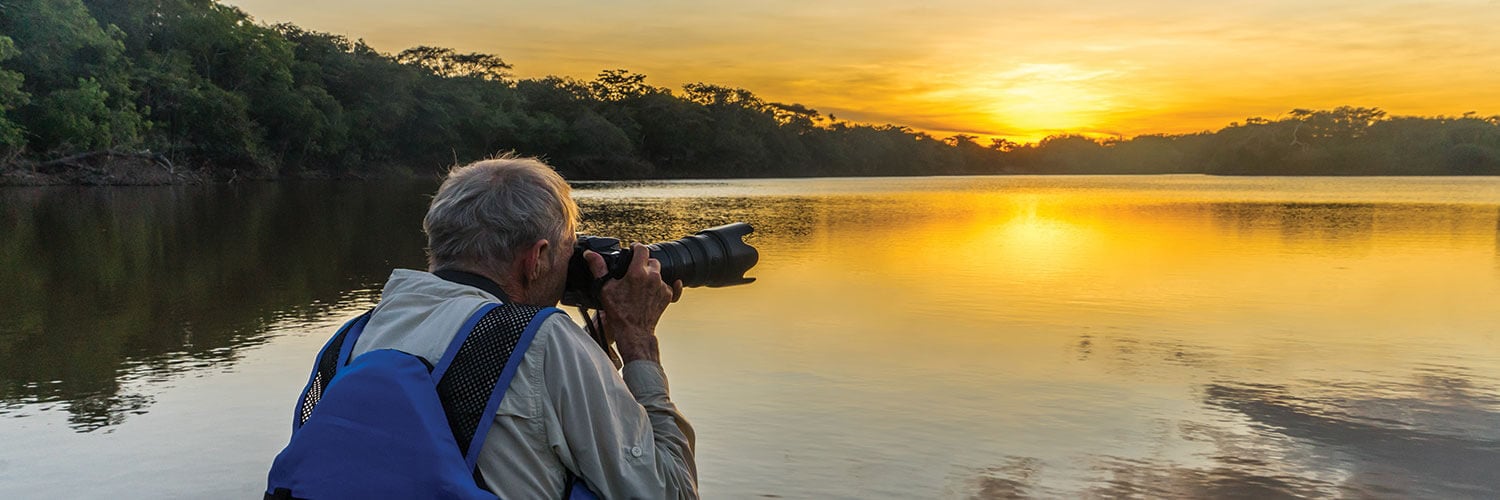
Fall in South America is from March to May. In general, this time of year results in fewer crowds and the price of transportation and hotels can drop throughout the continent as the busy summer season nears an end. Travelers will find great deals on hotels and tours at this time, while genuinely getting to experience the cities and cultures of the continent in relative peace compared to the busy summer.
In March, travelers can enjoy exploring the abundant marine life of the Peruvian Pacific, the volcanic islands in Brazil, the roaring waterfalls of Iguazu, and the incredible, untouched wildlife of the Galapagos.
Best Time to Visit the Amazon Rainforest
The Amazon Rainforest is an otherworldly experience. A place where rare wildlife can be just footsteps away from you. Spot the famous Jaguar, lurking caiman, colorful toucans, and more nestled in the lush rainforest. The best time to visit the Amazon Rainforest depends on the focus of your adventure.
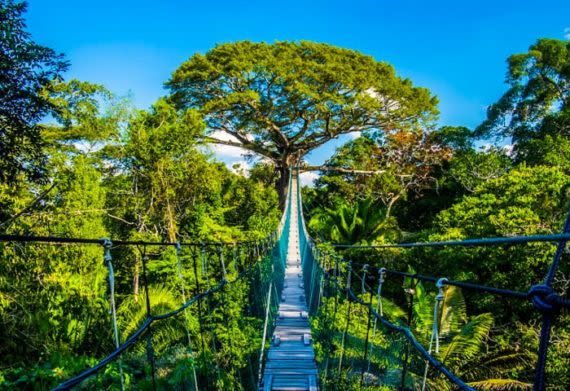
Best Time to Visit Machu Picchu
We consider Mid-April to June and from September to October to be the best time to visit Machu Picchu. This time of year coincides with dry and clear weather in the Andes Mountains. Travelers may reach Machu Picchu by train or trekking the Inca Trail.
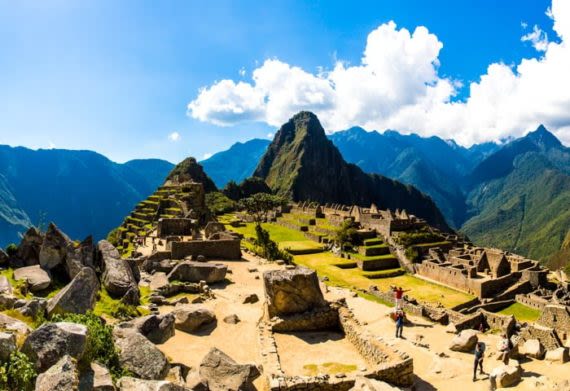
Best Time to Visit the Galapagos Islands
The Galapagos Islands are approximately on the equatorial line so the Galapagos enjoy year-round sunshine and warm weather. So really, anytime is the best time to visit the Galapagos; however, if you are interested in seeing specific types of wildlife, then you will want to explore our . We also have compiled some average temperatures in the chart below.
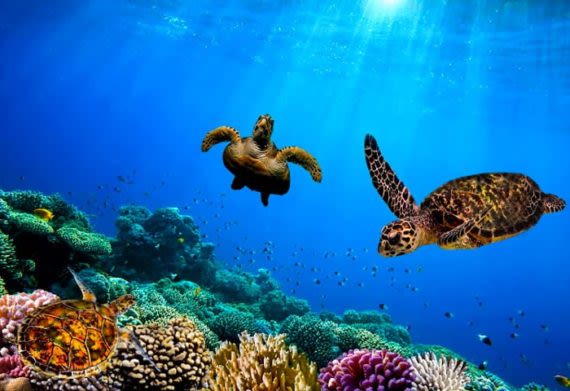
Best Time to Visit Venezuela
The dry season, from November to April, is usually the best time to visit Venezuela. This is the time of year that there is the least amount of rainfall and better warm sunny weather. The humidity is also lower making it a great time to explore the nature and landscape of Venezuela.
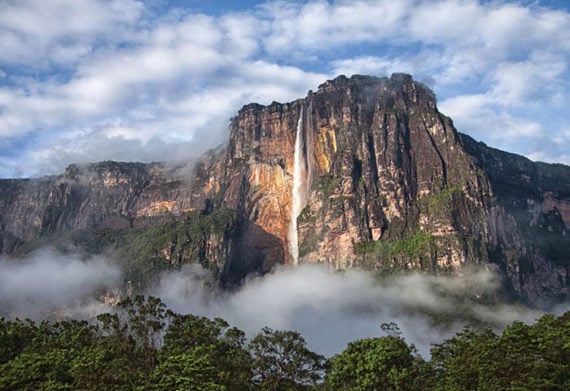
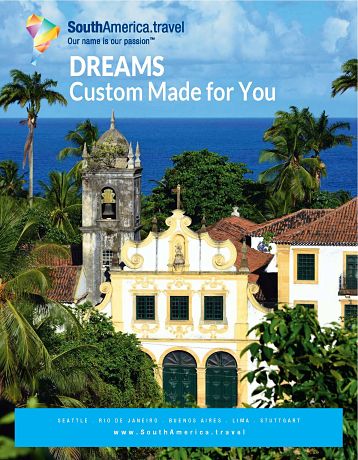
Download Your Free
South America Travel Guide
Download our FREE South America Travel Guide and get inspired to explore to South America. Browse through 26 pages of travel planning tips and ideas – a great resource for planning your dream vacation.
- Colorful maps and images
- Unique hotels within South America
- Inspiration for cruises, remote lodges and trains
- Wine, golf and adventure ideas
- 24 top tours of South America
Best Places to Visit in South America – June, July, August
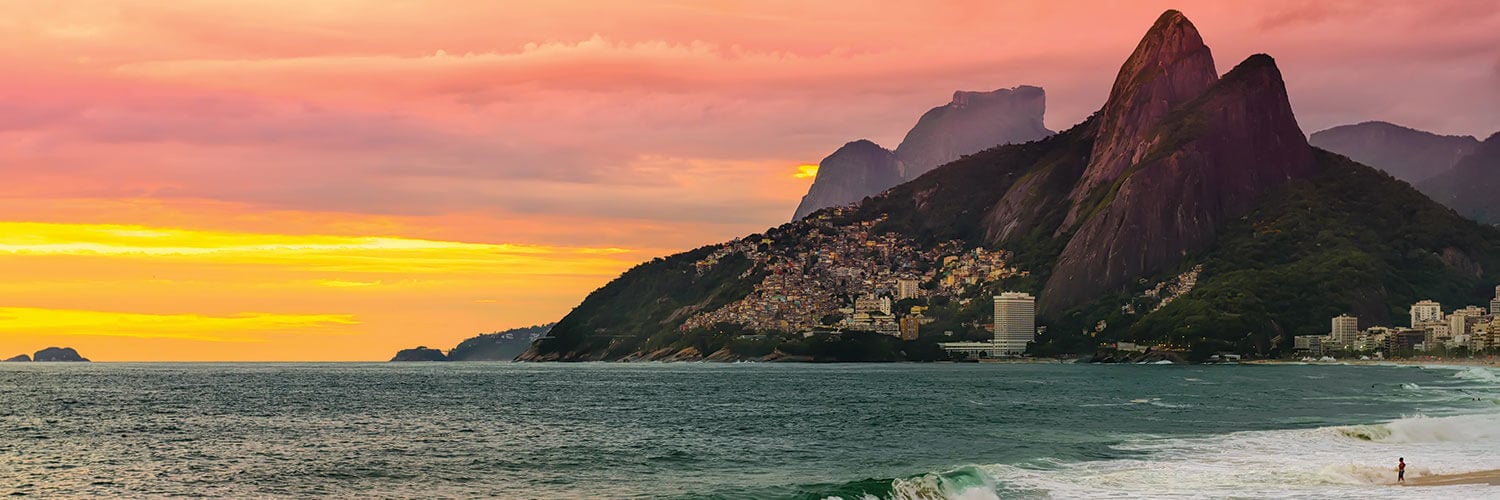
Unlike other continents, winter is an exciting season in South America, as it offers pleasant weather to every traveler. For visitors craving warm weather, Brazil, Ecuador, and Colombia are ideal. All three countries have a consistent, more temperate climate year-round.
For visitors who want to see Machu Picchu or the Andean regions of Ecuador, Bolivia, and Peru, these months perfectly align with their dry season. During this time, trails will reopen, and temperatures lower to a comfortable hiking level.
Winter sports enthusiasts will find no shortage of adventure during South America’s summer season. In Argentina and Chile, ski resorts and snow-covered mountains offer some fantastic skiing, snowboarding or cross country experiences throughout the winter.
Best Time to Visit Peru
Peru is one of the most popular destinations in South America – Machu Picchu being the huge draw. However, Peru boasts so many more beautiful sites and landscapes besides Machu Picchu which are perfect for families as well as solo and group travelers. Enjoy ancient ruins, colonial towns, and some of the world’s best cuisine.
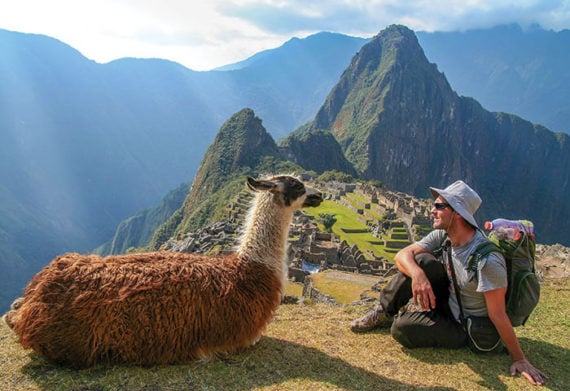
Best Time to Visit Colombia
The winter months of July and August are considered to be the best time to Visit Colombia. The summer months of July and August are also a great time to visit. These months have the lowest rainfall of the year and can also coincide with whale watching along the pacific coast.
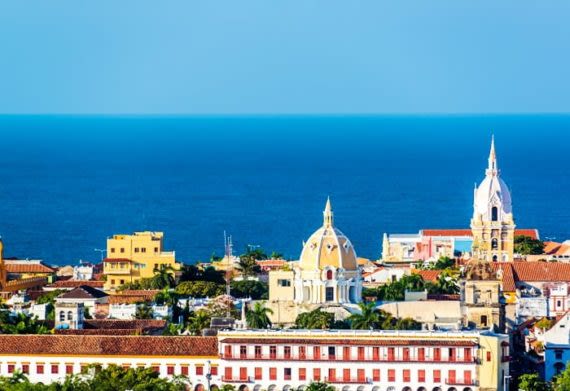
Best Time To Visit Bolivia
The Best Time To Visit Bolivia is the Dry Season, this is about from May To October. During this period, there are beautifully clear days with occasional rain showers. Although the days are considered shorter during this time, the sun still shines just as bright. The pleasant weather makes for worry-free road conditions and little barriers to transportation, meaning there’s nothing stopping you from exploring everything that Bolivia has to offer! If you enjoy hiking, trekking, bike riding, climbing or any other outdoor activities, the dry season is the best time to travel to Bolivia.
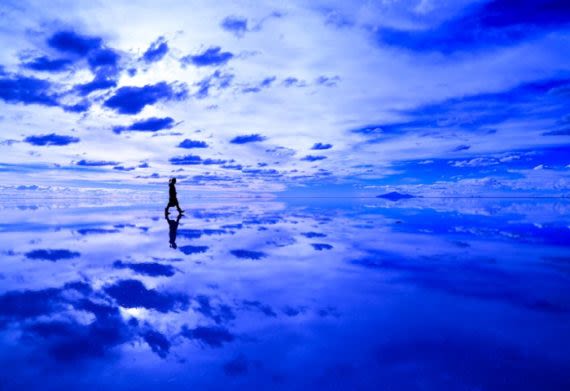
Best Places to Visit in South America – September, October, November
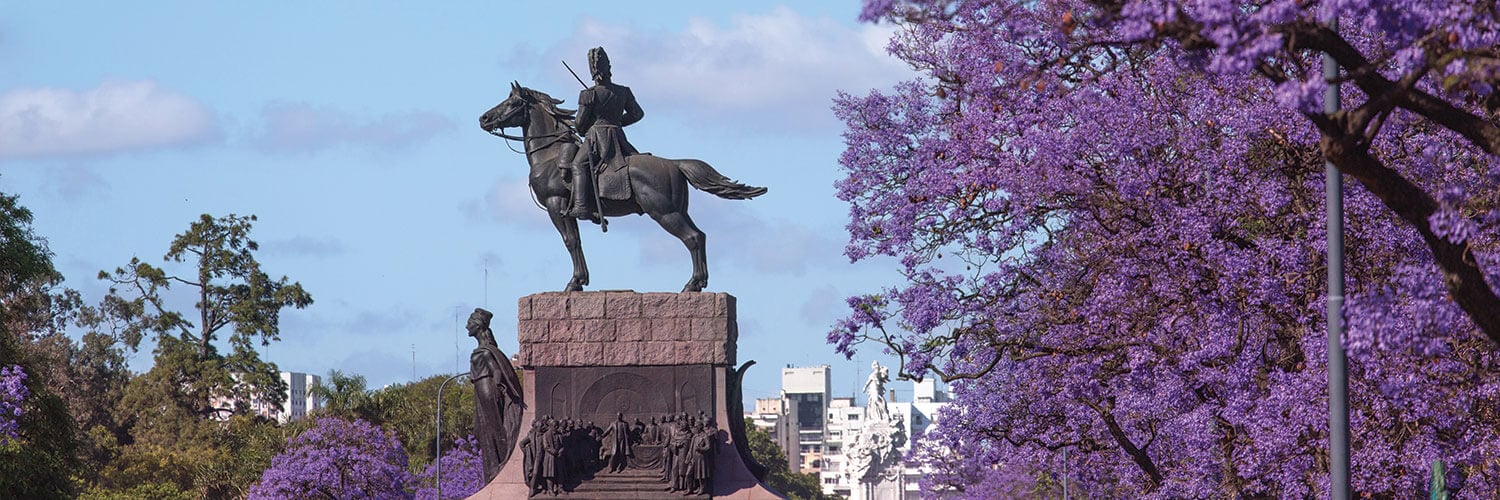
Spring is from September to November, and it is a fantastic time to visit South America. In general, spring marks the beginning of warmer weather throughout the continent. For example, in Buenos Aires, Argentina (the Paris of South America), travelers experience sunny, bright days and the beautiful bloom of Jacaranda trees that line its streets.
In tropical climates, like Colombia and the Amazon Rainforest, the seasons have little impact on weather changes, operating on their wet (approximately December – May) and dry seasons (June – December).
In addition to the warm and temperate weather conditions, travelers enjoy the added benefit of fewer crowds. It is during this time that European and North American families return to school and work after the northern hemisphere’s summer season, leaving South America even more enjoyable.
Best Time to Visit Argentina
Argentina is a popular destination for just about everything – its architecture, culture, wine, and natural landscapes keep travelers interested around the world. Taste the world renowned Malbec in Mendoza, dance the Tango in Buenos Aires, trek the glaciers of Argentine Patagonia, and explore its European inspired architecture.
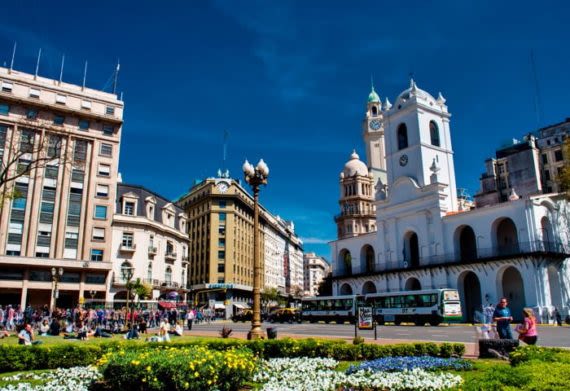
Best Time to Visit Chile
Chile is a great country to visit year round. Stretching over 4300 km long and almost halfway down the coast of South America, Chile offers a diverse range of climates. Depending on where you want to travel and what activities you would like to do, will determine the best time to visit Chile.
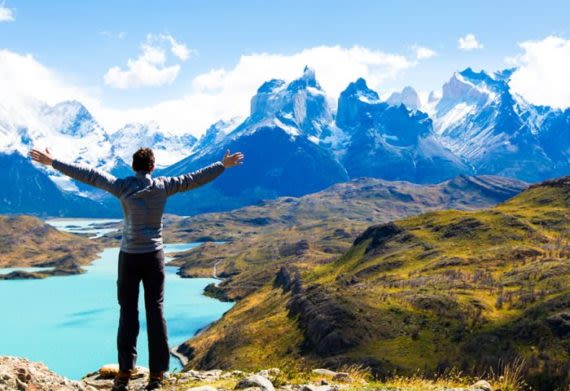
Best Time to Visit Patagonia
While Patagonia is arguably home to some of the most beautiful and breathtaking national parks in the Americas, it is also notorious for its unpredictable and ever-changing weather. We consider the shoulder seasons to be the best time to Visit Patagonia, but It’s tricky to give a blanket statement on when because it depends on what you are looking to do and see. Some venture to Patagonia for hiking, while others go for photography, relaxation, and adventure.
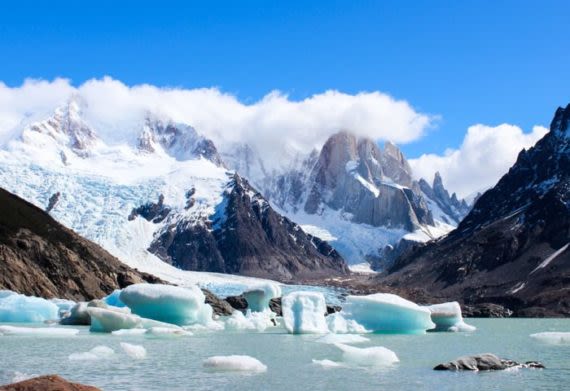
Best Time to Visit Paraguay
Travel to Paraguay is possible year round, but there are only two main seasons: hot, and extremely hot. The months of December through February are the peak hot months. Paraguay does not experience much rainfall, apart from the occasional cooling showers between March and November. We think travel to Paraguay is best any time of year, depending on your interest.
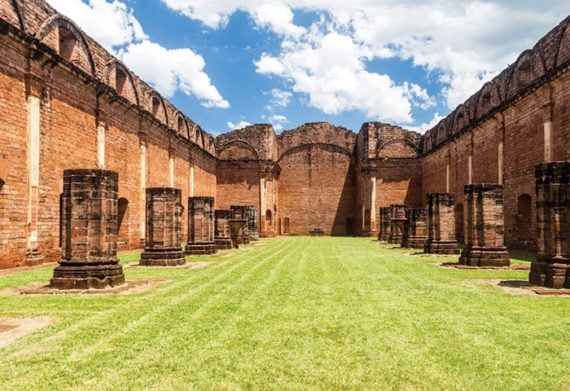
Best Time to Visit Guyana, French Guiana, and Suriname
We consider that from late August to September or February to March to be the best time to visit Guyana and its neighbors. The rainy period is over by then and everything is green and beautiful, Kaieteur Falls are running strong, and rainfall is not too much.
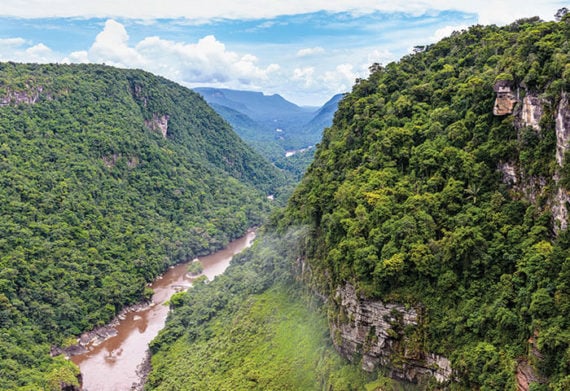
Best Time to Visit Uruguay
We consider October to March to be the best time to visit Uruguay, especially if you’d like to enjoy ocean breezes and beautiful blue skies. The wind coming off the ocean will keep you cool and you might even get a great suntan. While every season in Uruguay offers visitors ideal weather for many activities, the counties Autumn months also provide a great experience.
South America Travel: 1 Month Itinerary
South America is a mecca for travelers looking to experience different cultures, landscapes, outdoor adventures, and of course a variety of different cuisine. For my friend, Rachel, and I it had long been a dream to explore this land of contrast between ancient pre-Incan civilizations, Incan ruins, and Spanish colonization. We planned to travel together for three months and experience as much as time and more importantly, our budget, would allow.
We didn’t have a direct route planned, but here is how we spent our first month in South America.
1 Month Itinerary (Brazil, Argentina and Chile)
Day 1-4: Rio de Janeiro, Brazil

We decided to fly into Rio de Janeiro primarily as it was the cheapest flight we could find. Our first couple of days in Rio consisted of acclimatizing to a new city and getting over slight jetlag. We treated ourselves to nice accommodation and stayed in Copacabana, a couple of blocks from the beach so we could have some beach time before we travelled south where it was going to be colder. We arrived at the beginning of July, which is winter in this part of the world. It’s a nice time to visit if you don’t mind a slightly cooler climate (it was rarely below 50 F) and a bit of rain.
In Rio we were first introduced to what would become a staple diet for us on our trip, consisting of rice, beans, and meat for dinner and sweet cakes, and scrambled eggs for breakfast. We also tried a typical rodízio steakhouse restaurant where you pay a set price and the waiters will bring around different plates of meat for you to choose whatever you like. In Copacabana we also went to a Pizza version of this and paid about $11 each for a full meal and a couple of drinks.
We were also keen to see the main sites of the city. We found the best way to do this in the short time we had was to do a day tour, which cost about $55 each. The tour includes a visit to the Lapa steps, the life’s work of Chilean artist Jorge Selaron, a visit to the most famous landmark in Rio, the Christ the Redeemer Statue, and finally a cable car ride up the Sugarloaf Mountain at sunset. It was definitely worth the price, although if you’re feeling slightly more adventurous, not so flush with money, and have a bit more time you could equally get public transport or even taxis to each site.
We debated traveling to Iguazu Falls via Paraty as we had heard that it is beautiful but we decided financially and time wise we were better off heading straight to Foz do Iguacu on an overnight bus. If you have the time, I would definitely recommend including a day or two in Paraty before going on to Foz do Iguacu. Instead, we got a bus from Rio de Janeiro to Foz de Iguazu, which cost roughly $65 and was advertised as being 24 hours. However, we were soon to learn the realities of travelling by bus in South America.
Day 5-8: Foz do Iguacu, Brazil & Puerto de Iguacu, Argentina

The 24-hour bus turned out to be closer to 28 hours so instead of arriving relatively early in the day we arrived in Foz do Iguacu as nightfall was approaching. We had toyed with the idea of staying in the town itself when booking our accommodation but instead chose to stay in an Eco lodge right next to the entrance of the national park. This turned out to be a wise decision. We got a taxi from the bus station to the lodge where we used our padlocks for the first time… on the window in our room, which didn’t stay closed otherwise. There wasn’t much around the area as the entrance to the park is a good 15 to 20 minute drive from the town. However, our lodge did a nice dinner of beans and rice for $6 per person.
On our first morning, we walked down the driveway of our lodge, about 100 meters to the left and we were at the entrance to the park. Included in the entrance fee is the bus, which runs from the entrance to the trails from which the spectacular falls can be viewed. Like most of the big attractions we visited on our trip, it was very crowded, however that didn’t take away from the stunning natural beauty of the falls. In our time in Iguacu, we also visited the Parque des Aves. This family founded and run Bird Park is a must for anyone, not just bird lovers. We also took a day trip (via taxi, organized by our accommodation) to the Argentinian side of the falls. The trails on the Argentinian side were longer and more clearly sign posted and great to get some exercise, although still very crowded. If you have the time, it’s definitely worth visiting. Whether the falls are better on the Brazilian or Argentinian side…the debate rages on.
Day 9-12: Corrientes, Argentina

To get to Corrientes we took a public bus from outside our accommodation in Foz do Iguacu to the Argentinian town of Puerto de Iguacu. We spent the day there and took an overnight eight-hour bus to Corrientes, arriving early in the morning.
Corrientes has a beach on a river and is a quiet yet vibrant large town. It did not disappoint, and gave us a real feel for Argentinian life. We spent a couple of days on the beach, although we didn’t brave swimming in the river. We also explored the city including the street art and the book fair, which was on at the time we were there.
We quickly learned that the priorities to look for in a dorm room are:
- Easily accessible plug sockets, preferably in each bunk.
- Individual lights.
- Spacious rooms.
- Upper bunks easily accessible and not too high. Personally, I preferred staying in mixed rooms but there are usually female and male dorms available too.
Day 13: Salta, Argentina

Our next stop was Salta. We stayed for one night as it was really just a brief stop for us on the way to the northern desert area of Argentina. We found it to be very lively, particularly at night. There were lots of restaurants, bars, and clubs to choose from, many of which featured peña bands and dancers, which are traditional and very popular in this area. The next day we got the bus from Salta to Juyjuy, the gateway city to the more northern areas, and then from Juyjuy to Maimara. The journey took only about five hours.
Day 14-17: Maimara & Tilcara, Argentina

We had decided to stay in Maimara, which is less than four miles outside of Tilcara, the main town in the area to stay in. We had met a fellow traveler in Corrientes who had recommended Maimara and in particular a homestay she had stayed in there. This was really our first experience of being in more remote regions and we loved it… for a certain amount of time. Maimara is very small but there is lots going on. The first evening we arrived, there was a local festival on with food, dancing, and local handmade crafts for sale.
On our first full day we took a local taxi into Tilcara, visited Pucara de Tilcara, a pre-Hispanic archaeological site, and trekked to El Garganta del Diablo (the Devil’s throat) which took about two hours and is definitely worth walking rather than getting a taxi, if you can. Tilcara, although quite touristy, is a strikingly picturesque town and full of life.
The next day we took a local bus to Pumamarca and from there took a tour to Salinas Grandes. The drive alone is breath taking and reaches an altitude of 4,000 meters. The salt flats themselves were like nothing we’d ever seen before and the views, as well as the wind, blew us away.
Day 18-21: Cordoba, Argentina

From Maimara we took the bus back to Juyjuy and then another bus from Juyjuy to Cordoba. It felt very strange being back in a city after what felt like a long time in the remote northern regions. Cordoba is a city for everyone. It is full of history and culture, and has some modern areas as well as lots of cute little streets, cafes, and shops. It’s also where we did our first of many “free” walking tours. These tours are usually tip based and some will suggest a tip amount whereas others will leave it completely up to you.
Day 22-25: Mendoza, Argentina

We took a 12-hour bus journey from Cordoba to Mendoza, which was to be our last stop in Argentina and our personal favorite. Throughout most of our South American trip we were able to use the website www.busbud.com which gives accurate (the majority of the time) information about bus journeys. We would use this site to get information on times, bus companies, prices, and likely journey times and then compare against this when we went to the bus stations to buy our tickets.
Although much smaller than Cordoba, there is no shortage of activities to do in Mendoza. We did a sunset horse trek on our first afternoon there, which included a barbeque of some of the best food we had thus far on our travels. We also did a bike tour of some local wineries. We also visited the Cacheuta Thermal Springs, where we splashed out and went to the hotel thermal springs for a full afternoon and enjoyed the sauna and a mud bath, this costs us around $15 each.
Mendoza is a city with an interesting history (worth doing the free walking tour to hear more about this) and feels like a small town disguised as a city. When the Spaniards arrived here the landscape was occupied by the Huarpe Indians, who had created a dam system to enable them to grow different crops. Remnants of this dam system remain today as the modern city has a dam system to irrigate the thousands of trees planted throughout the city. It’s definitely a place I would like to return to.
Day 26-30: Santiago, Valparaiso, and San Pedro de Atacama, Chile

One of our shortest bus journeys was our eight-hour journey from Mendoza across the Andes into Santiago. This includes the couple of hours it took to get through the border crossing between Argentina and Chile, which, although long, was quite straightforward. As were all of our other border crossings. I would definitely recommend checking the visa requirements in advance for each country you intend to visit as they do differ depending on your nationality. For example, in Bolivia there is a requirement for U.S. citizens to get a visa to enter the country and this costs around $160.
The bus journey was stunning. From the start to the end you have fantastic views of the Andes and although hair raising at times driving along narrow, winding roads, it is definitely worth the extra heart palpitations. A possible end to your month of traveling would be to spend a couple of days in Santiago including a day trip to Valparaiso, which is only a couple of hours from Santiago, then back to Santiago to fly home. Alternatively, you could spend some more time in Brazil at the beginning of your trip or cross into Paraguay for a couple of days from Foz do Iguacu and then travel into Argentina through Paraguay. For our trip which was to continue on for a couple of months we spent a couple of days in Santiago then Valparaiso and traveled north through La Serena to San Pedro de Atacama which was a huge highlight for both of us. From there we travelled to Bolivia, then along Lake Titicaca into Peru and up through Peru into Ecuador.
Daily Budget/Budget Breakdown for the Traveling

Our budget was roughly $1,600 per month including $11 to $16 per night on accommodation. This meant our daily budget was roughly $55 per day. We had originally hoped to travel on an even stricter budget and this is definitely possible if you don’t do as many activities and tours as we did, don’t move around as often, stay in the cheapest accommodation possible, and cook the majority of your meals in hostels.
While we had a cheap accommodation budget and spent the majority of our nights in dorm rooms, we didn’t stay in the cheapest hostels as luckily we could stretch our budget a bit to ensure we were comfortable. We did also stay in a lot of double or twin rooms when they were within our budget. We rarely spent over $11 per night on accommodation and in fact often spent below that.
We were keen to try local cuisine in each area we traveled to but this also meant eating out a lot. To compensate for this we would book accommodation that included breakfast, fill up on breakfast, and typically only eat out one meal a day. Filling up on snacks or breakfast leftovers during the day. We would normally be able to get a full meal plus a beer for about $11 each. However, there were some locations (such as Santiago and Chile in general) where we often spent more than that. There were also times we spent a total of $11 for two meals and drinks in places like Bolivia.
What to pack?

It was difficult deciding to pack, as we knew we would experience different types of weather on our trip. I packed some warm and cool clothes, trek towel, hiking boots, comfortable walking shoes, flip-flops, and sandals. I also packed a first aid kit which I would definitely recommend (add extra plasters) and a sleeping bag which you will definitely need if you plan on trekking. Some of the simpler things like a laundry bag and a padlock as well as a head torch turned out to be the handiest. And of course a swimsuit if you plan on doing any sunbathing.
Is South America Safe to Travel?

We felt safe in all of the countries we visited and didn’t experience any problems. We’ve both traveled a good bit and are very conscious of taking precautions. We were mindful not to carry too much cash, or our passports around with us—unless traveling between places—and we kept these locked in lockers in the hostel. If we had to carry them we kept them on our person in fanny packs at all times and made sure that the fastener of our fanny pack was not easy to open or access. We did hear a couple of stories of phones etc. being stolen but if you keep your wits about you at all times, you do minimize the risk of that happening. As two women traveling, we did receive some attention but if you’ve traveled before this is probably something you are used to.
Overall, I was surprised at how easy it was to get around. In every town we visited no matter how big or small there were always multiple bus companies operating and it was easy to get buses to where we were going. It was definitely a huge advantage that my friend speaks quite good Spanish, although I did pick up the basics. If you can, I would recommend doing a short course before arriving as most people will not speak English. For the most part the people in each country we visited were very friendly and keen to communicate with us. The people as well as the incredibly diverse landscape and vast array of things to see and do all made our trip an incredibly memorable experience.

Get Your Free Report on the World’s Best Places to Retire:
Learn more about the best places in the world to retire in our daily postcard e-letter.
Simply enter your email address below to sign up for our free daily postcards and we’ll also send you a FREE report on The World’s Top 10 Retirement Havens, plus access to over 10 more free reports. Our gift to you, on our favorite destinations.
South America Backpacking Routes: Seven Itineraries for Two Weeks to One Month
South America is a truly unique travel experience, with myriad landscapes and cultures. Many new South American travellers become intimidated by how much there is to do and how little of it is familiar.
Don’t worry, once you get going, you’ll quickly fall in love with the towering mountains, long beaches, lush forests, old towns and much older ruins. Top it off with friendly people, new foods, a little craziness, and you are bound to have a great time.
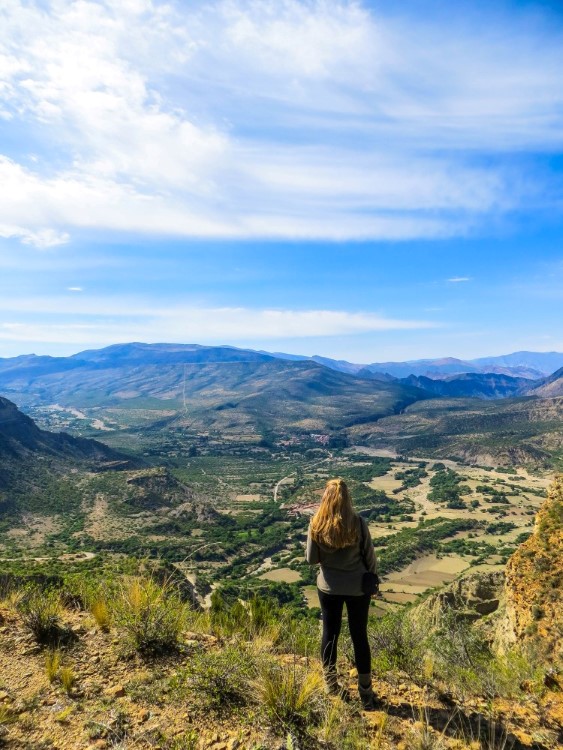
South America, where to go first?
When I first landed in the continent, I knew absolutely nothing about traveling here and realised I should have planned where to travel in South America, so I drew a map of the continent and started plotting potential routes.
I’ve laid out the best South America backpacking routes for you to get the most out of the time you have.
Whether you have two weeks or a month in South America, a shoestring budget or a lush lifestyle, one of these routes will get you started with your trip ideas and help you discover all that South America has to offer.
Before you dive in, it’s also worth checking out our article about what to pack for South America – a guide written after seven years of exploring the continent.
What’s in this article:
What should you consider before planning your South America backpacking route?
- Budget: ‘How much can you spend traveling in South America’ and ‘how much should you spend traveling in South America’ are two very different questions, and both are important. Traveling South America cheaply is possible; the cost of backpacking here is far cheaper than in most other parts of the world and it’s relatively easy to stick to a budget of $50 USD per day. My main tip would be to have a budget so that you don’t overspend but also avoid keeping the purse strings so tight that you miss out on amazing experiences. Identify what is important to you and set aside part of your budget for it before you start.
- Where you will land: This is not only important for the route you pick but also relevant when looking at flight costs and visa restrictions. Hubs such as Lima, Santiago, São Paulo and Bogota generally have the cheapest connections with countries outside of South America, as well as plenty of direct flights between these and other parts of the continent.
- The best time to go to South America: Remember to also think about the seasons; the best time to go to South America really depends on exactly where you’re heading. The northern countries are usually best visited in the dry season (May to September) and the southern countries in summer (October to April). Read our article for more detailed information about the best time to visit South America.
- What do you want to do: Do you want to do a five-day hike in Patagonia, learn to surf in Peru, walk the streets of Buenos Aires or dance salsa in Cartagena? Remember to consider what is important to you to see or do, not only how much time and money you have.
- Is it dangerous to backpack in South America? No, it’s not. Travelling to South America – or any part of the world in fact – requires pre-planning and thought, so you know how to get from A to B safely and without issue. Learning Spanish before you go is helpful but not essential; what you’ll find is that many travellers follow similar South America travel routes, so you’ll quickly find and make plenty of new friends along the way.
- The best itinerary for South America: Ultimately, there is no best itinerary. What matters is that you spend your time and your money seeing destinations and having experiences that will last you a lifetime. All of the South America backpacking routes and places to visit outlined in this post have been tried and tested by myself and other backpackers, so it’s really a choice of deciding which one most appeals to your imagination.
Planning Your Trip to South America?
Save time, stress & money with a customized travel itinerary planned for you by a South America expert
What previous clients have said:
Steph’s itinerary exceeded all expectations. She provided off the beaten path hikes, great restaurants and accommodations, and very helpful local contacts.
Due to the weather we had to deviate from our original plan, however Steph quickly responded to our email during the trip with further recommendations. Her service took all the guess work out of planning our vacation and lead to the most fun and unforgettable trip we have ever had!
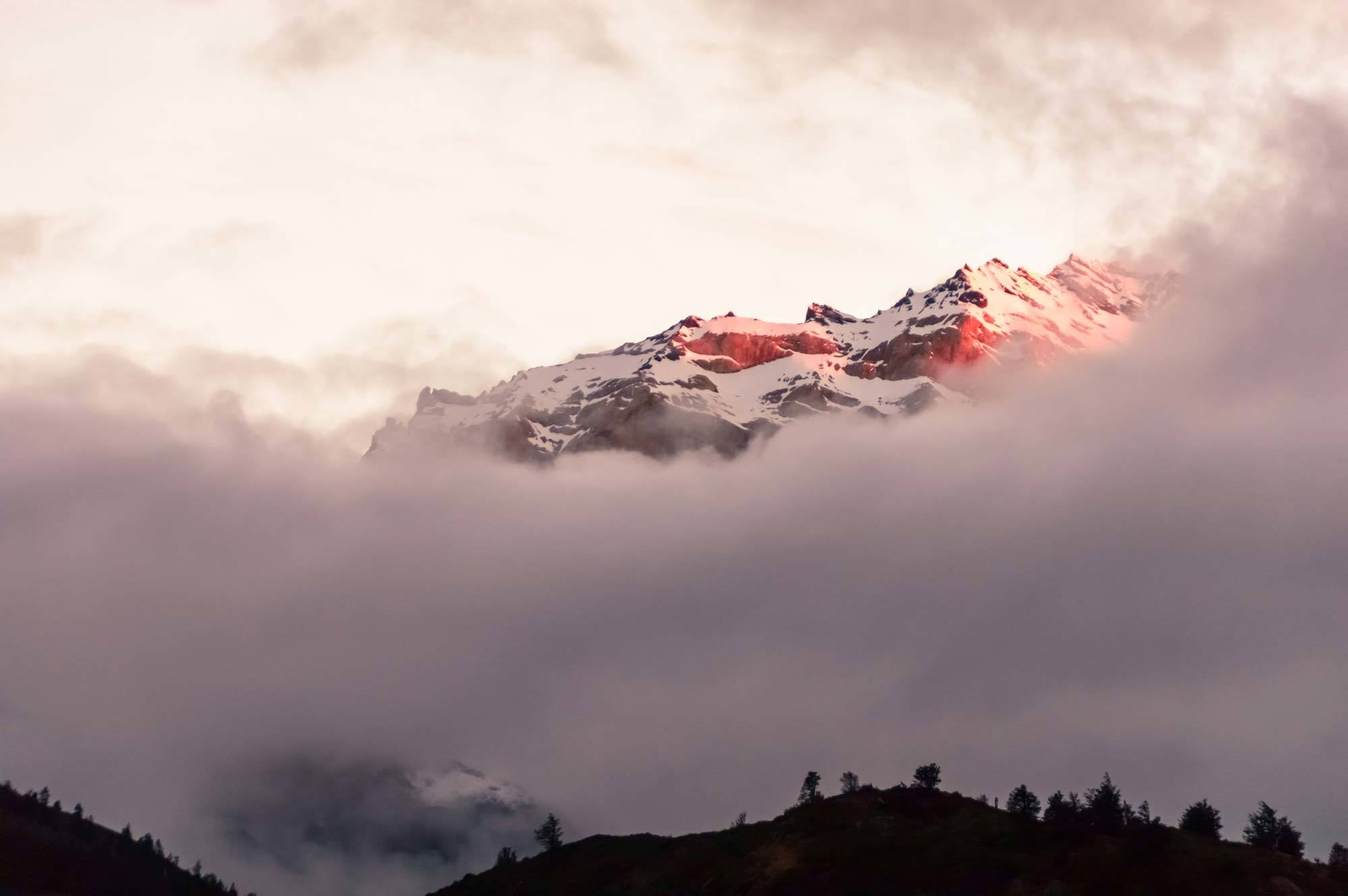
Catherine Bradley
Ten days in South America
Very short trips to South America can be difficult. Cities and tourist attractions are far apart and fast travel (aka flying) is expensive. Good planning will help you make the most of it.
I’ve laid out one itinerary below, but you can also get inspired by the two-week itineraries for Peru and Colombia, as these can easily be adapted to a shorter duration.
Ten Days in Brazil
Brazil is huge, but this ironically, makes it a great destination for a short South American trip – let’s face it: you would never be able to see it all anyway!
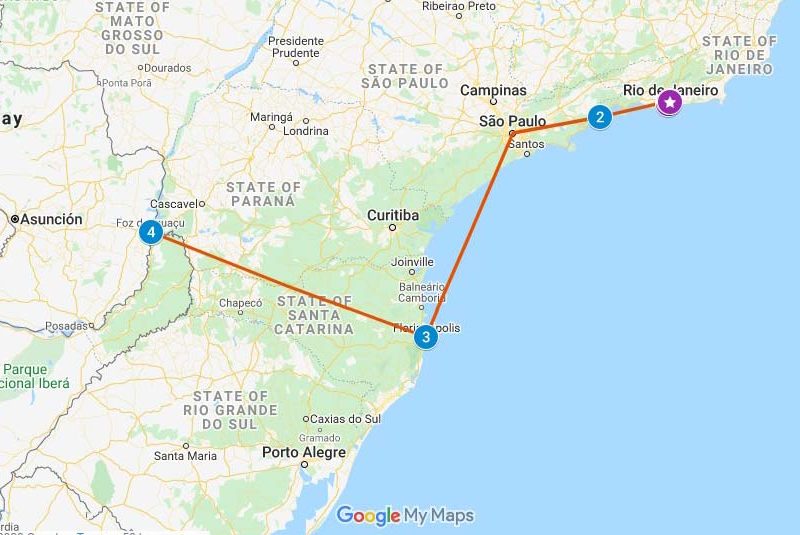
Click the image for an interactive Google Map for this itinerary
This ten-day Brazil itinerary will give you a taste of the fun, flare and beauty of this vast and extraordinary country.
Days One to Three: Start your trip in Rio de Janeiro, a city that is an absolute must-see on any Brazil trip. There is so much to do here that you will need to plan your activities in advance.
Definitely set aside some time to sun yourself on the beaches of Copacabana, Ipanema or Leblon. Hike or train up to the Christ the Redeemer statue for panoramic views of the hilly city and the glittering Atlantic Ocean below.
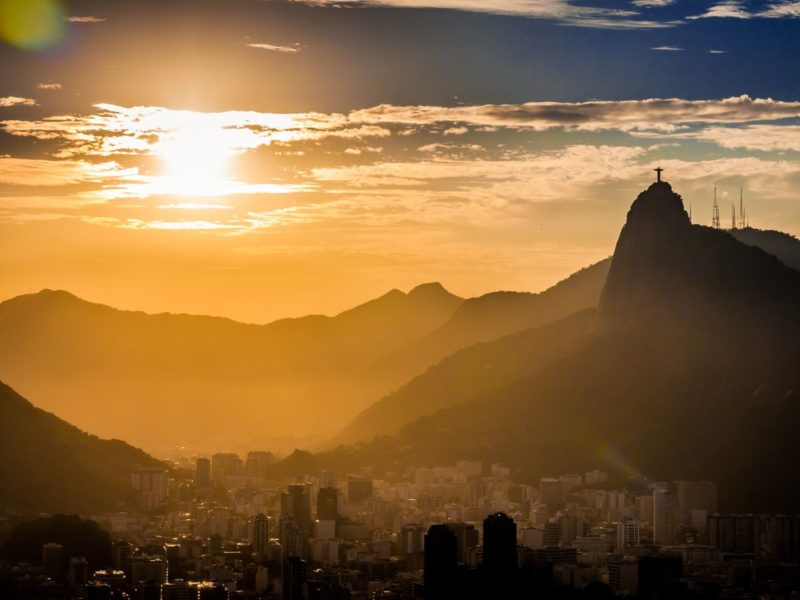
Sunset over Rio de Janeiro.
Inside the city itself, Santa Theresa is a great artistic neighbourhood to explore and Lapa is the area to experience the nightlife of Rio.
Days Four to Six: Next, take a four-hour bus to Paraty, a colonial coastal city with a laid-back atmosphere and plenty of islands only a day trip away. The old city is a UNESCO World Heritage site and is also popular amongst Brazilian holidaymakers.
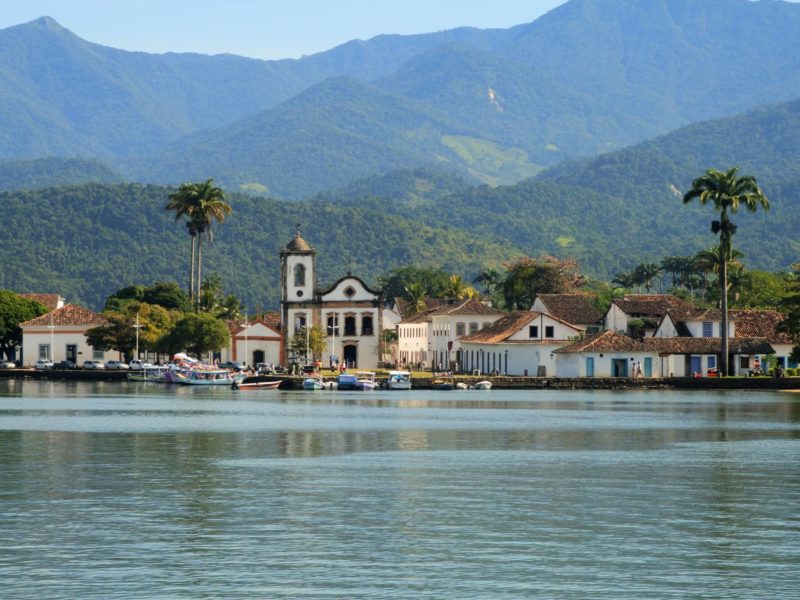
The colonial coastline of Paraty.
You’ll have no problem keeping yourself busy thanks to the rage of gorgeous streets, nearby waterfalls, fine restaurants and interesting boat trips.
Days Seven and Eight: Head south to Florianopolis for some relaxation. You can either take an overnight bus from Paraty or take the bus to Sao Paulo and fly from there. Once you arrive, don’t stay in Florianopolis City; instead, head straight to the island to enjoy its clean and stunning beaches.
You can easily use public transport or rent a car to explore them and the equally striking corners of this gorgeous island.
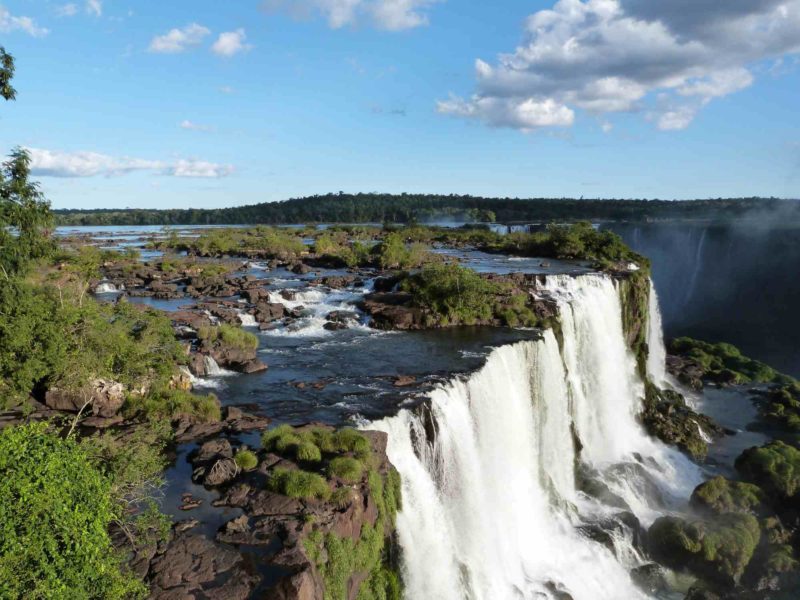
The impressive Iguazu Falls
Days Nine and Ten: Your last stop is Foz do Iguacu (Iguazú Falls), an overnight bus journey from Florianopolis. Another must-see, these falls are a wonder of the natural world and are jaw-droppingly powerful.
On the border with Argentina, they can be viewed from both sides but the Brazilian side is famous for panoramic views of the entire waterfall complex, with various pathways allowing you to catch sight of all 275 falls.
The bottom line: Brazil is too vast to see on any trip that doesn’t span months, but this itinerary gives you a good snapshot of what this beautiful country has to offer.
Two weeks in South America Itinerary
While two weeks is not a lot of time for traveling in a continent as huge as South America, with some forward-thinking, you can still see a lot.
Top tip: Pick one country to explore rather than spread your time too thin. Peru and Colombia are both great places to explore in short periods of time because both are jam-packed with compelling attractions, all of which aren’t very far away from each other.
Two-week Peru Itinerary
Peru is one of the most intriguing countries to travel to in South America – it’s no surprise that it makes most travellers’ bucket lists. Between beautiful cities, fantastic food, awe-inspiring Inca ruins, and rich indigenous culture, you are bound to fall in love.
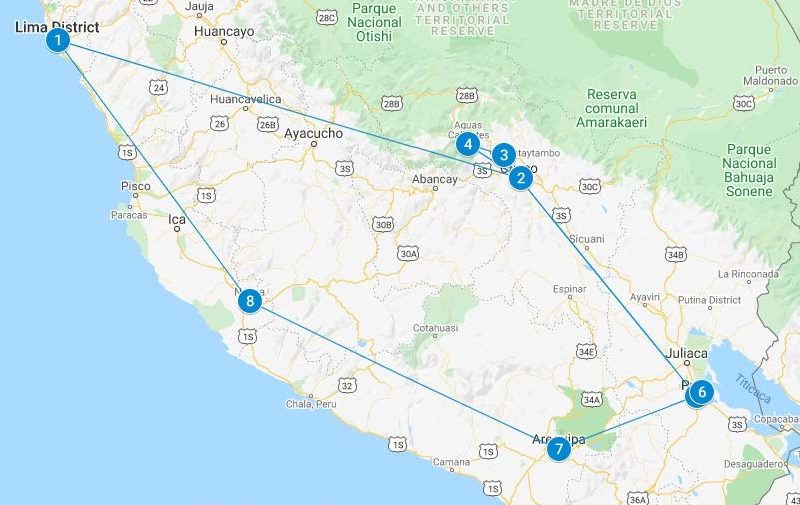
Click the image for an interactive Google Map for this itinerary
For a short trip to South America, this is definitely one of the most rewarding destinations as there are so many things to do here in Peru – in what is actually a relatively small country.
What’s more, Peru has a little for everyone: everything from culture, fine dining, ancient history and jaw-dropping scenery.
Top tip: It’s best to plan your trip in the dry season, which is May through September. This time of year is peak season in Peru but guarantees sunny days that won’t interfere with your plans.
Days One and Two: Start in Lima, the vibrant capital of Peru. Spend some time exploring the boardwalk in fancy Miraflores, the old colonial buildings in the old city centre, and the street art scene of Barranco. If you’re not on a budget, Lima is home to three of the world’s best restaurants: Central, Maido and Astrid y Gastón.
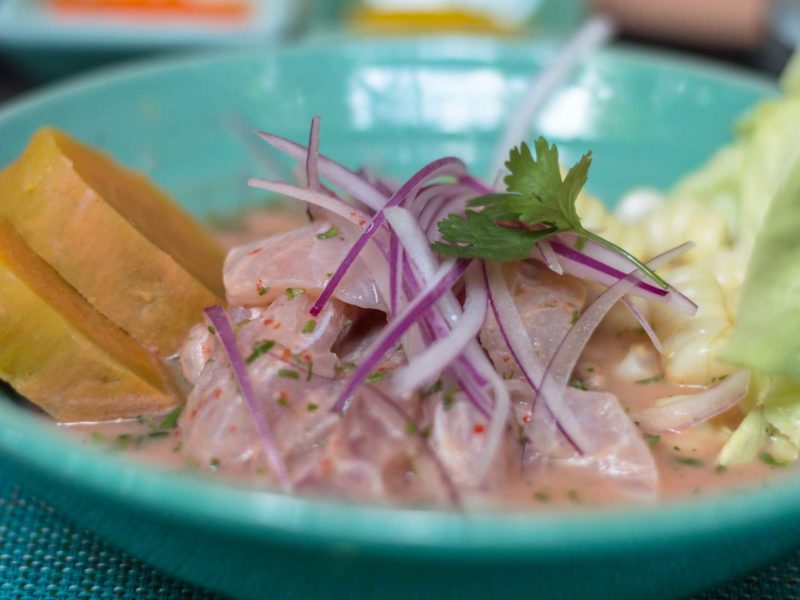
Every region has its own variation on ceviche.
If you’re counting the pennies, try ceviche (a local dish of raw fish, lime and chilli) in Barranco and chifa (Peruvian Chinese food) anywhere.
Days Three to Five: From there, fly to Cusco, the oldest continuously inhabited city in the world. It can get pretty crowded with tourists but is definitely worth it.
Spend a day or two in a city whose history is everywhere you look thanks to the Inca (who built it) and the Spanish (who colonized it). Free walking tours are great for budgets, while souvenir shopping is not so much.
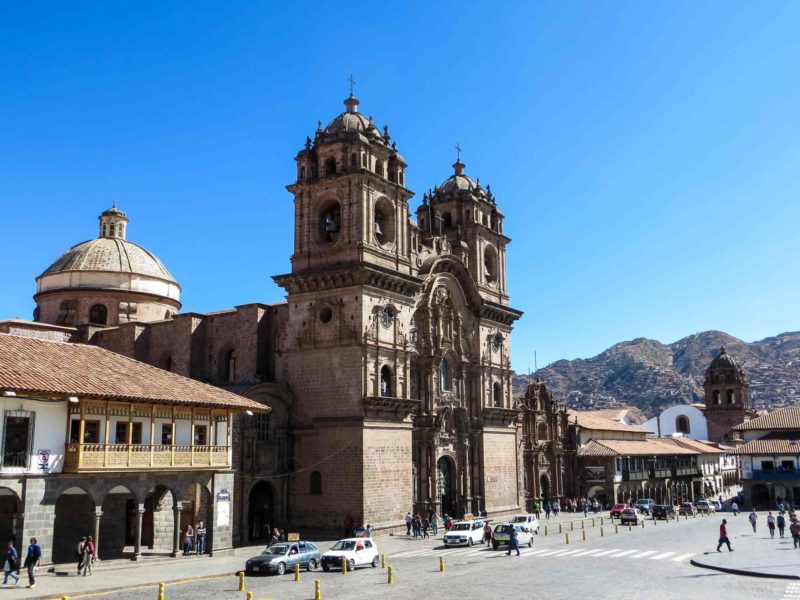
The Plaza de las Armas in Cuzco, Peru.
Days Six to Eight: Once you’ve acclimatized to the altitude, take a tour of the Sacred Valley, and, of course, visit Machu Picchu. The most efficient way to see the ancient Incan citadel is to take the train: it might be expensive, but it’s the fastest option for a short trip. You can stay overnight the Sacred Valley at one of its many hotels and guesthouses, too.
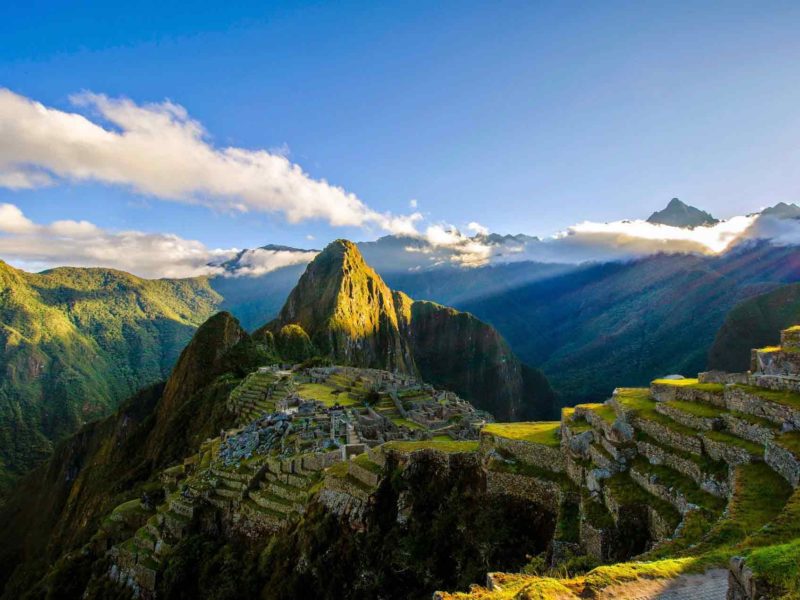
Sunrise over Machu Picchu.
Alternatively, sign up for a two-day bus tour with an agency in Cusco or add an extra day to your itinerary and take an Inca trail hiking tour instead.
Days Nine and Ten: Take a spectacular train ride from Cusco to Puno on the shores of Lake Titicaca. Spend a day visiting the Uros floating reed islands or kayaking on what is the highest freshwater lake in the world.
Days Eleven and Twelve: Catch a bus to Arequipa, a beautiful city nestled below El Misti Volcano. Arequipa’s dazzling white and historical centre is another of Peru’s UNESCO World Heritage sites.
Days Twelve and Thirteen: Bus north up the Pacific coast to Nazca, where you can fly over the famous Nazca Lines and get back to Lima by bus in the afternoon. If you’re on a tight budget, it might be better to spend a few more days in Cusco and the surrounding areas, instead.
Day Fourteen: Get ready for the journey home and have one last plate of ceviche and a pisco sour to bid farewell to your trip South America backpacking trip.
Adapting this itinerary: If you want to make this a shorter trip, cut out Puno and Nazca, and instead head from Cusco to Arequipa and then fly back to Lima.
Two weeks in Colombia
Colombia is one of the best backpacking spots around. It’s cheap, beautiful and the Colombians are largely extremely welcoming and friendly.
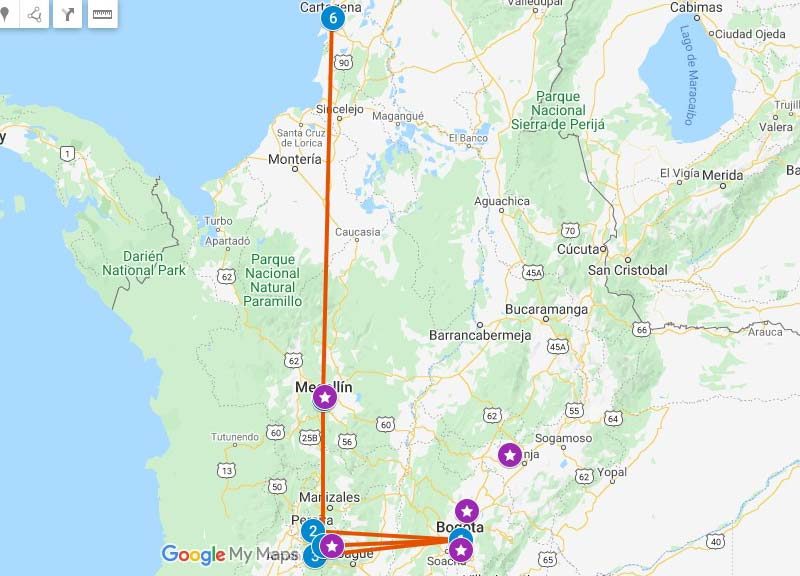
Click the image for an interactive Google Map for this itinerary
It’s up to you whether you prioritise nightlife, beaches or history but, whatever you choose, Colombia is a fantastic destination.
Day 1-4: Start in Bogotá. Colombia’s capital is a diverse, vibrant city filled with bright colours and a dark history. Explore the street art, old buildings, and great coffee, while the world-class Museo del Oro (Gold Museum) can’t be missed.
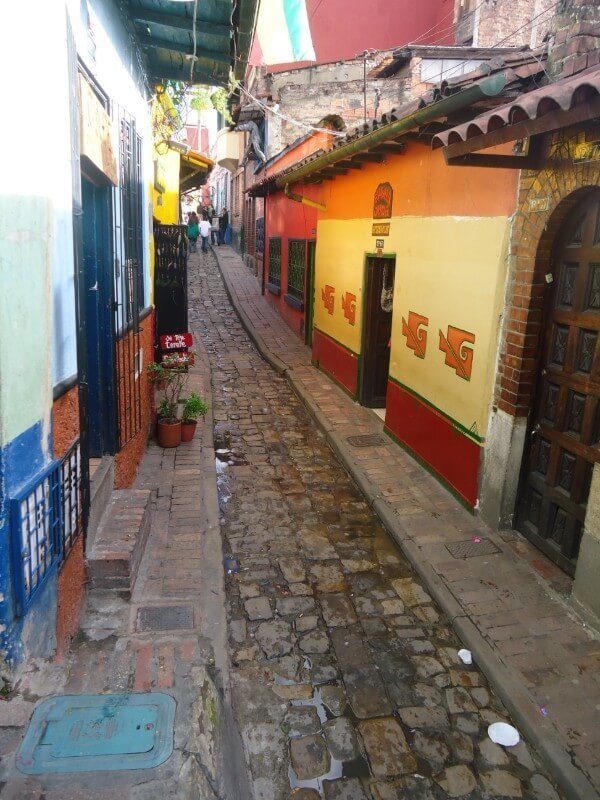
The colorful streets of Bogotá.
If you like to party, Bogotá boasts some of the best nightclubs in South America and day trips should hinge around Villa de Leyva, a beautiful colonial village, as well as the Salt Cathedral in Zipaquirá.
Alternatively, book yourself onto an incredible tour flying out of Bogotá to San Vicente Del Caguán visiting a part of southern Colombia that was, until recently, inaccessible for travel because of the armed conflict.
Truly adventurous travellers can join the three-day Rafting For Peace tour, where you take on the rapids of the Río Pato alongside ex-FARC militants who’ve found rafting a credible means of bringing peace to the region.
Support sustainable, responsible tourism in Colombia – and learn a tonne about the country’s chequered history along the way- by booking the Rafting for Peace tour with IMPULSE Travel Colombia and get a 5% discount by using the code WORLDLY5 at checkout.
Days Five and Six: Fly to Pereira or Armenia where you can either stay in the colourful town of Salento or in a hacienda in one of the surrounding coffee plantations.
Be sure to do a coffee tour and to play the local game of tejo, a fun traditional game that involves throwing disks at a target, with the bull’s eye being a tiny packet of gunpowder. It’s great fun.
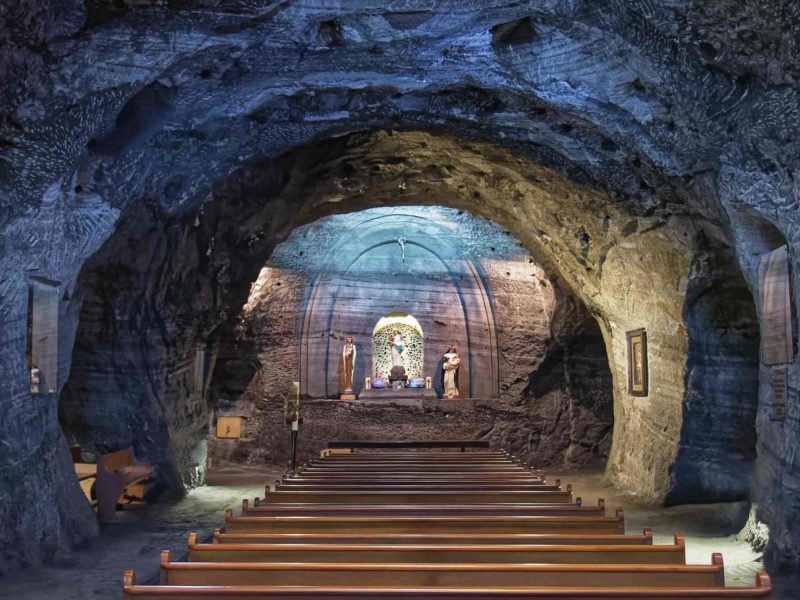
The cathedral in Zipaquira is carved from pure salt.
Spend a day hiking in Valle de Cocora National Park, where you can see wax palms towering up to 60 metres above your head.
Days Seven to Nine: Fly to Medellin, a city famous for its tragic past of gangsters and cocaine. While it was once one of the most dangerous in the world, Medellin is now an innovative modern city, where the weather always feels like spring.
Explore the beautiful parks and some great museums, such as the interactive science museum, Parque Explora.
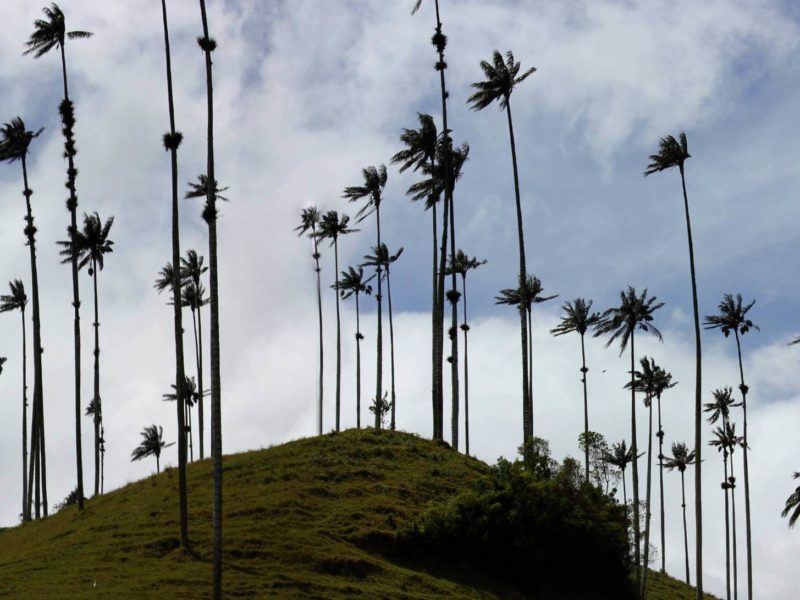
The slender palms of the Valle de Cocora tower far overhead.
Days Ten to Fourteen: Fly up to Cartagena. The Caribbean city of Cartagena de Indias was declared a UNESCO World Heritage site for its incredible colonial old quarter.
You can spend days wandering the picturesque cobbled streets and flowering bougainvillaea. There is a lot of music and food on these busy streets, or you can take a unique tour to learn about the hidden history of Cartagena on a sustainable weaving tour with indigenous Zenú guides.
There are also several beaches and islands nearby that can be visited for a night or just a day trip.
Adapting this itinerary: If you haven’t had enough, or had a different trip in mind, check out what to do on the Caribbean coast in our one-month Colombia itinerary further down or explore this guide to the best places to visit in Colombia.
Two weeks in Chile
Chile is another rewarding destination to spend a two-week vacation in South America. While it’s certainly one of the more expensive destinations on the continent, its diverse landscapes and reliable network of flights and buses make it a perfect place for a short South America trip.
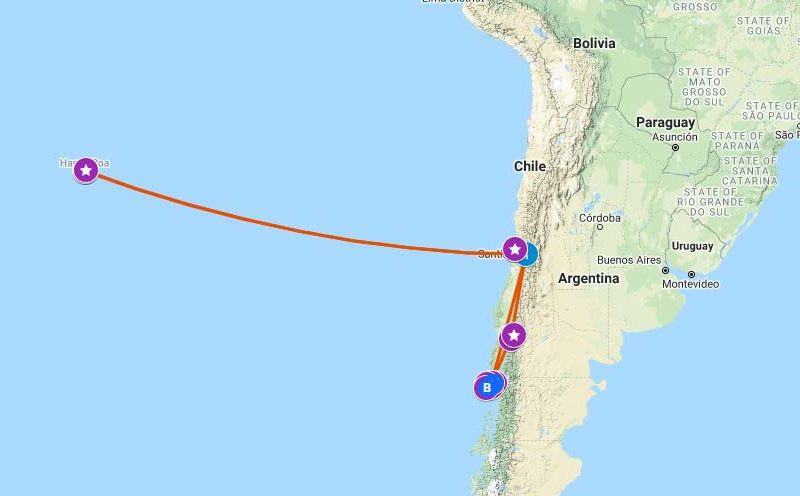
Click the image to for an interactive Google Map for this itinerary
Days One to Three: Fly into Santiago, the Chilean capital city and spend a day exploring its wealth of museums about historic pre-Colombian cultures, sipping on delicious Chilean wine and getting to grips with the city’s thriving gastronomic scene in award-winning Boragó or Restaurant 040.
Take a bus out east to the quirky, street-art daubed streets of Valparaíso, a bohemian university city cascading over a coastal hill. Take a free walking tour or graffiti tour and spend an afternoon appreciating the views from Nobel Prize-winning poet Pablo Neruda’s former residence.
Days Four to Six: Return to Santiago and take a plane six hours west across the Pacific Ocean to the fabled volcanic island, Easter Island.
Here, you can hire a car or take tours out to see the stoic moai statues that line the shore, each representing the ancestors of the local Rapanui people, as well as see the quarry from which each and every last one was carved.
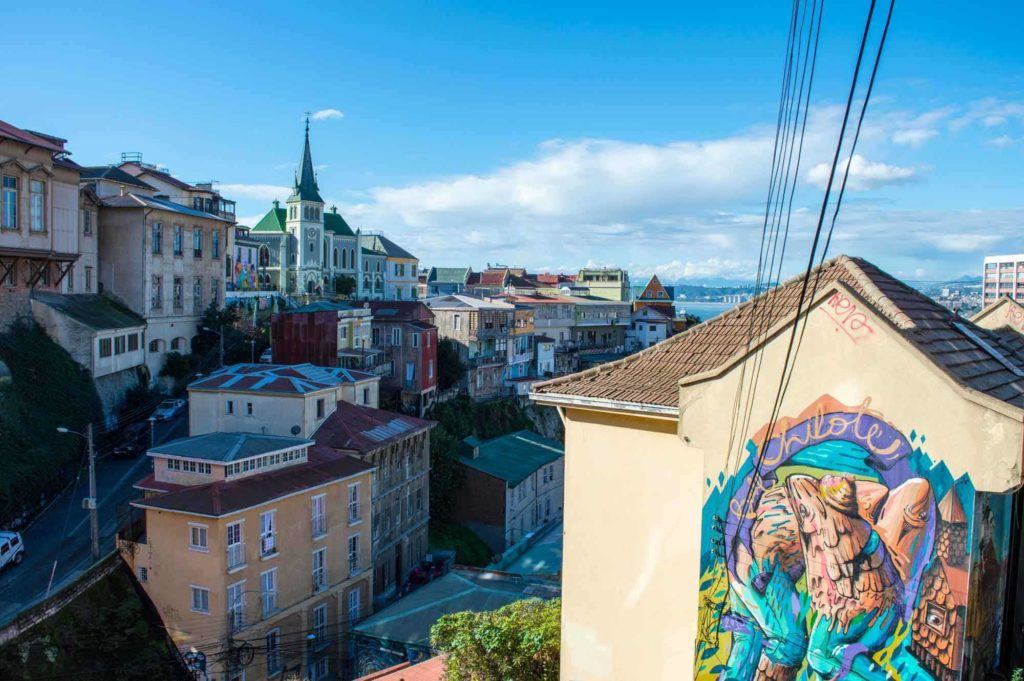
Finding street art in Valparaiso is like the best kind of scavenger hunt.
Catch a performance of Polynesian traditional dance in the main town, Hanga Roa, hike around the north-western coastline to see ruins that receive few – if any – visitors or kick back on the white sands of Anakena, a tropical beach in the island’s far north.
Days Seven to Nine: Fly back to Santiago and take an overnight bus to Pucón, southern Chile’s adventure capital. Trek up the rock-strewn and snow-dusted slopes of Volcán Villarrica before easing yourself into the hot thermal springs that dot the surrounding area.
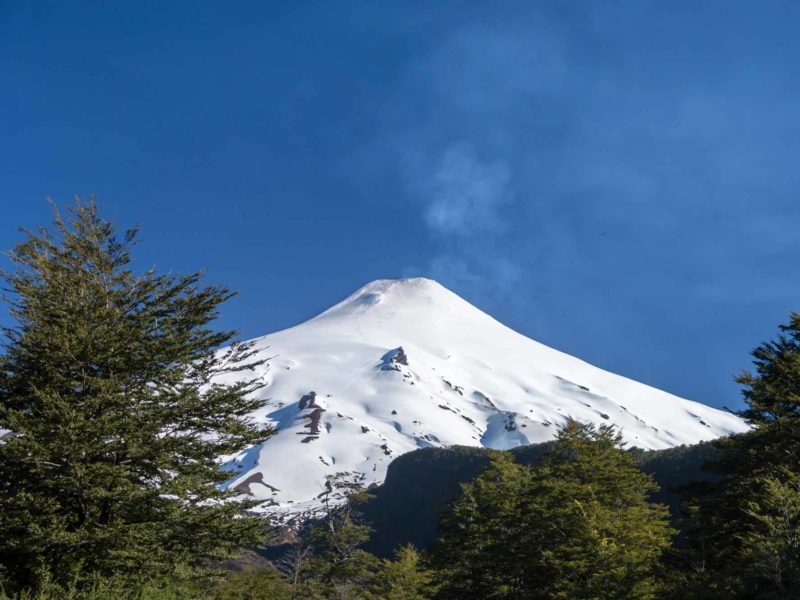
Volcan Villarrica boasts both snowy hiking and thermal hot springs.
Spend a day in nearby Parque Nacional Huerquehue for glorious views of lakes and gushing waterfalls.
Days Ten to Fourteen: Hop on an overnight bus and wake up the next morning in the bustling capital of the Chiloé archipelago, Castro. Catch the city’s houses on stilts – palafitos – in the early morning light for striking photographs.
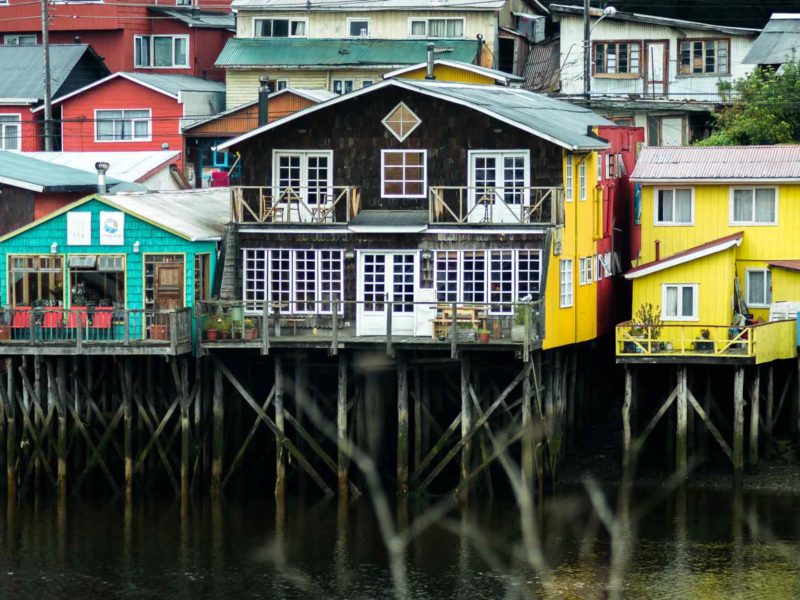
Brightly painted palafitos on the shores of Castro.
Afterwards, take rattling, old public buses between the brightly painted churches of Tenaún, Chonchi and Dalcahue and join the locals for a steaming bowl of curanto (seafood stew) in the latter’s market.
Take the bus out to Parque Nacional Chiloé to hike in lush temperate rainforest and admire the island’s most startlingly empty beaches and follow the path to the Muelle de las Almas for a photograph at a cliffside side pier where you can hear the howls of the dead echo through the air.
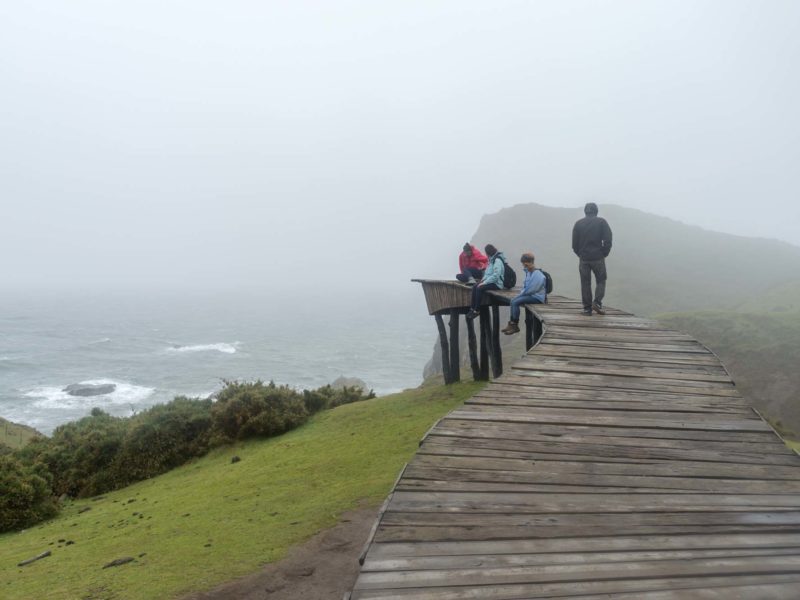
The Muelle de las Almas can feel like the edge of the earth.
Return to Castro and fly back to Santiago.
How to adapt this itinerary: We’ve written more about Chile and how to explore this country – with plenty of alternative suggestions – in this two-week Chile itinerary and you can find itineraries to suit your budget and travel style in my brand new guidebook, Moon Chile.
Want a custom-made Chile itinerary, but without the effort of organising it? Get it planned by an expert (me!) with my travel itinerary planning service (prices starting from $100 USD) or local operator EcoChile Travel who design and book tours throughout the Chile and who offer Worldly Adventurer readers a 5% discount on their services! Find out more information here and book here to claim your discount.
One-month South America Backpacking Routes
My recommendation for a one-month South America itinerary is to not try and fit too much in. You don’t want to burn yourself out by trying to cram everything in, but also you need a little wiggle room for the inevitable late bus or great location that throws off your schedule.
Leave yourself a few days unplanned to use when you need a day off or you just can’t resist spending one more day somewhere.
One-month South America travel itinerary: Peru, Northern Chile and Bolivia
This is a perfect trip for seeing some of the greatest highlights of South America. This backpacking route will take you through the most beautiful and historic sites on the continent.
However, be aware that if you’re looking for a super low-budget trip, this isn’t it. Between the tickets to Machu Picchu and the many tours you will want to do in Bolivia and Chile, this is for someone who’s seeking an action-packed trip and is happy to pay for more expensive tours and transport options.
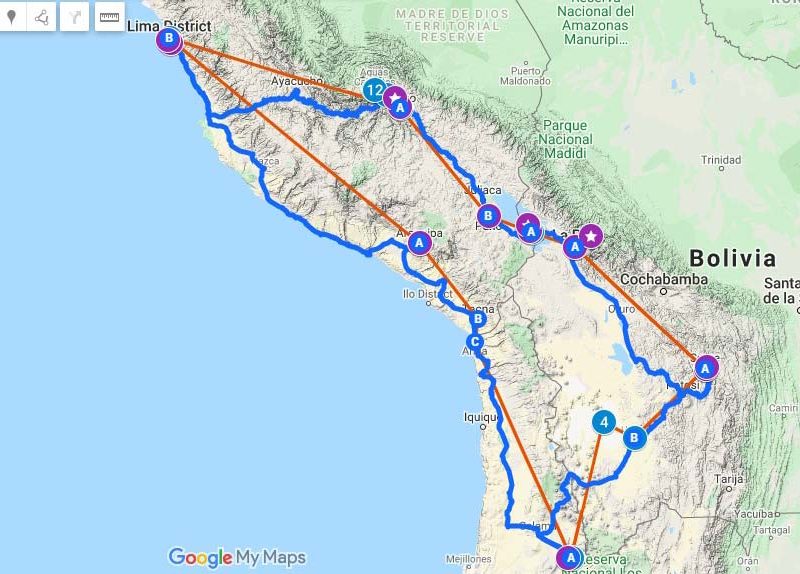
Click the image for an interactive Google Map for this itinerary
Week One
Start your trip flying into Lima, the capital of Peru. It’s both busy and huge, and possibly a little intimidating, but it’s a good introduction to traveling in South America!
Walk the beachfront of Miraflores at sunset, explore the trendy Barranco neighbourhood, and be sure to eat some ceviche, local dish of raw fish, lime and chilli.
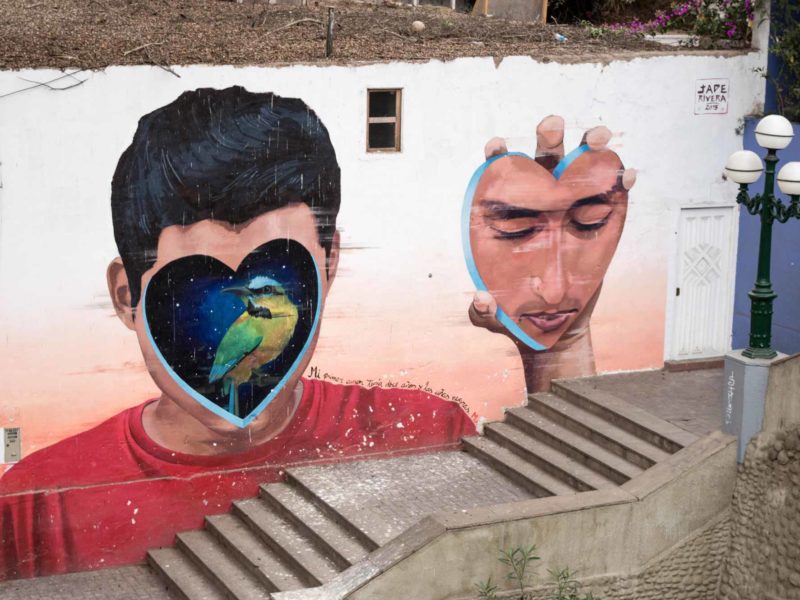
Street art in the Barranco neighborhood of Lima.
It is also worth visiting the Larco Museum to get a better understanding of Peruvian history, the beautiful 18th-century villa houses a large collection showing 5 000 years of pre-Columbian art.
From there, fly or bus it overnight to Arequipa. This beautiful colonial-style city is a UNESCO World Heritage site that sits beneath a volcano. Be sure to do a city walking tour (free, except you will have to tip your guide) to see its detailed, baroque architecture carved from white volcanic stone. Explore what the city has to offer with our comprehensive guide to what to do in Arequipa and find a comfortable place to stay with our guide to accommodation in the city.
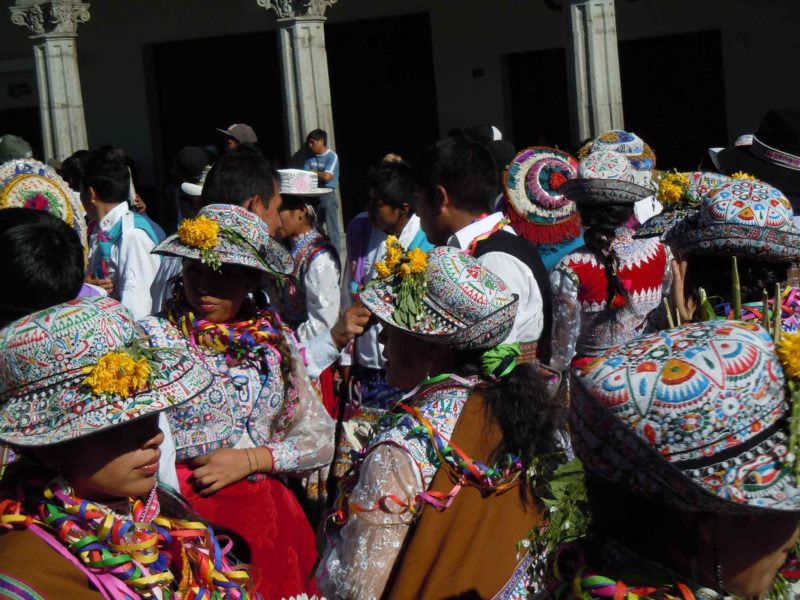
Traditional hats in Arequipa, Peru.
From here you can also take a two- or three-day trip to hike Colca Canyon, the second deepest canyon in the world.
Week Two
Your next stop is San Pedro de Atacama, Chile. Take the morning bus from Arequipa to Tacna, cross over the border to Arica in Chile and then the overnight bus that brings you the next morning to this small desert town on the Chilean-Bolivian border.
While this place is a tourist trap of note, it’s worth visiting because it is the base for a plethora of surrounding activities. My favourites were Valle de la Luna, a truly surreal sand valley of salt and cliffs, and the stargazing tours.
You cannot understand how expansive the universe is until you see a desert night sky with absolutely no light pollution, allowing crystal clear skies with the Milky Way branching above you.
None of the tours are cheap and tour agencies will do their best to overcharge, but you can often negotiate better prices if you are in a group or booking multiple tours with one company, and it’s advisable to ask for more than one place for a quote.
Make friends in your hostel and see who’s found a good deal or is interested in the same tours you are.
San Pedro de Atacama is also the departure point for the three-day trip to the Salar de Uyuni, the picture-perfect salt flats that lie just on the other side of the border in Bolivia.
You can do a one- to four-day tour from Uyuni in Bolivia, but why not use it as a way to travel to Bolivia rather than starting and ending in the same place?
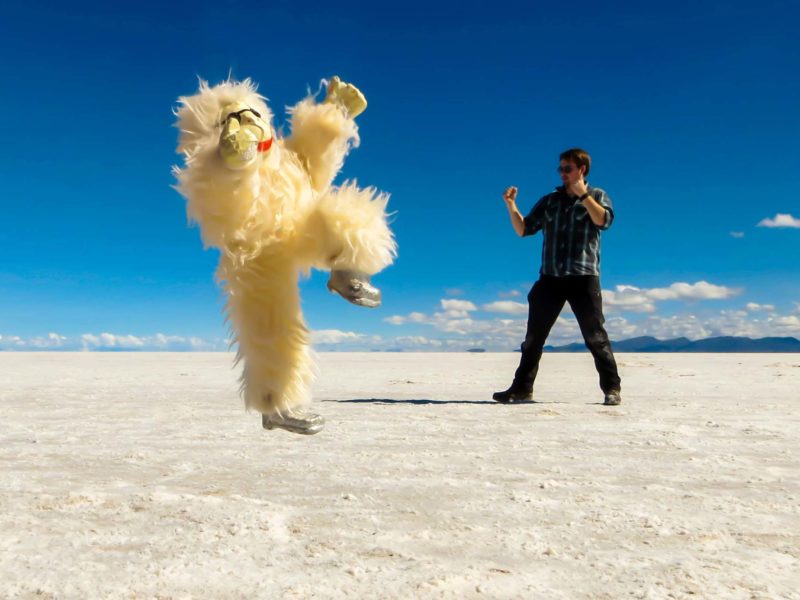
Salar de Uyuni is the perfect place to play with your perspective.
From San Pedro de Atacama, it’s a three-day tour across the border and through the blinding white plateau of the Bolivian salt flats, an experience that is definitely worth it but is far from a luxury travel experience.
The trip is entirely done in a cramped SUV-type vehicle that would have done the trip many times before you arrived and the accommodation is basic. However, the landscapes, lakes and hot springs are some of the most beautiful scenery I have seen anywhere in the world and this experience should not be skipped.
Once you make it to Salar de Uyuni, your tour will give you a day to enjoy the expansive salt flats and then take you to Uyuni before dark. Spend the night in Uyuni, get warm, have a good shower and then a bus to Sucre the next day.
This will be probably one of the worst bus rides of your life – I don’t want to lie to you, as Bolivian buses largely suck. Almost all the buses are old, with no heating, and uncomfortable seats.
Couple these with the narrow, winding rows of the Bolivian Andes, and you get quite a combination. Wear warm clothes and try not to sit at the front.
Week Three
Bolivia’s capital Sucre is a colonial city with great markets and a range of cool things to do. Try and find the hilarious zebras of the zebra crossings: volunteers who dress up as zebras to direct pedestrians across the busier streets.
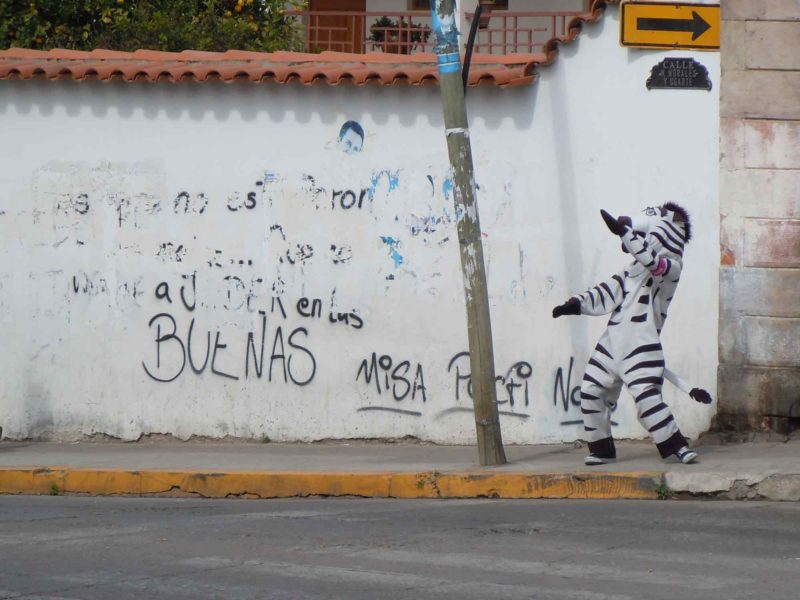
The dancing zebras of Sucre are there to keep you safe.
There is also a two-day hike to the Maragua Crater, where you can see the geological formations that formed around Sucre, including some truly fascinating fossilized dinosaur footprints that were exposed by an earthquake.
If you aren’t interested in the hike but want to see fossils, head over to Park Cretácico, a dinosaur museum just on the outskirts of Sucre that offers tours to the base of an entire wall of hundreds of dinosaur footprints, which was discovered accidentally in still-functioning quarry.
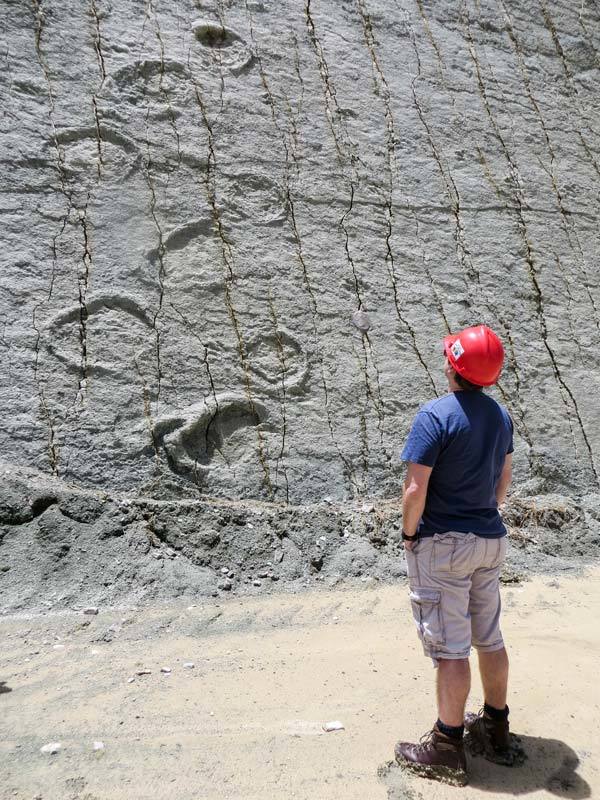
The largest collection of fossilized dinosaur footprints is found in Sucre.
From Sucre, you can either fly or take the bus to La Paz. The capital of Bolivia, La Paz is the highest capital city in the world, sitting at 3,640m above sea level. Don’t underestimate this altitude: it will knock the wind out of you, so take it slow.
Explore the Witches Market, take a whirl at bicycling down the infamous Death Road, or just explore the endless street markets and try my favourite, api morada, a spiced purple corn drink that is drunk warm for breakfast.
Next stop is Lake Titicaca, the highest freshwater lake in the world. Copacabana is a small town on its shores and is famous for being a Catholic pilgrimage site. While the town is a bit of a tourist trap, the glittering blue lake and the expansive sunsets are definitely worth a visit.
Spend a day or two on the Isla del Sol, believed by the Incans to be the birthplace of the sun. This tranquil island has a walking path that crosses the length of it and is dotted with ruins and fishing villages.
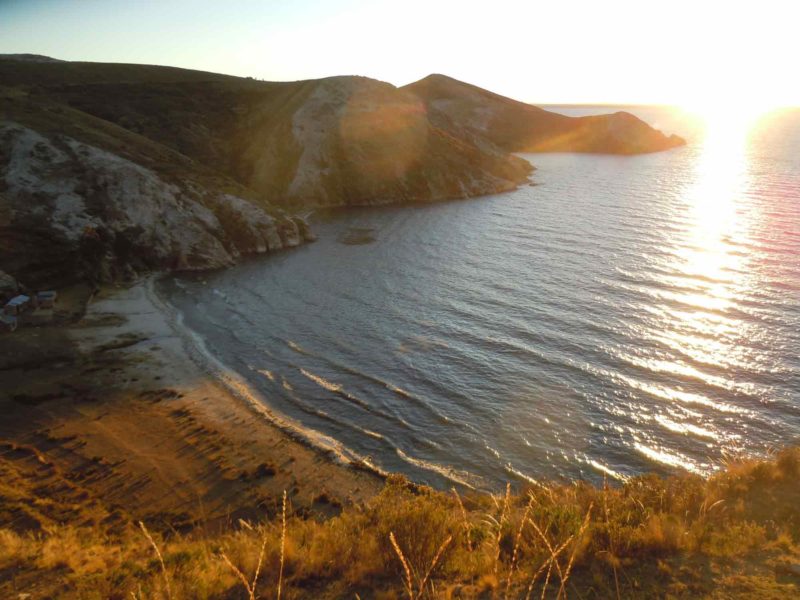
The Isla del Sol was believed to be the birthplace of the sun and is home to several archaeological sites.
It is now time to return to Peru. Take a tourist bus from Copacabana to Cusco. You can stop along the way in Puno on the Peruvian side of Lake Titicaca to see the floating reed villages of the Uros people.
There is also an option to take a cultural bus tour from Puno where you can learn some Peruvian history and see some pre-Incan sites along the way.
There are a few companies offering the service but Inca Express are what we’d recommend.
Week Four
You should be acclimated by the time you make it to Cusco, the oldest continuously inhabited city in the world. Spend a day or two here exploring the cobblestone streets and local Inca sites, like Sacsayhuaman.
Free walking tours are great for budgets, and it is a fantastic place for some souvenir shopping, but watch out for inflated tourist prices.
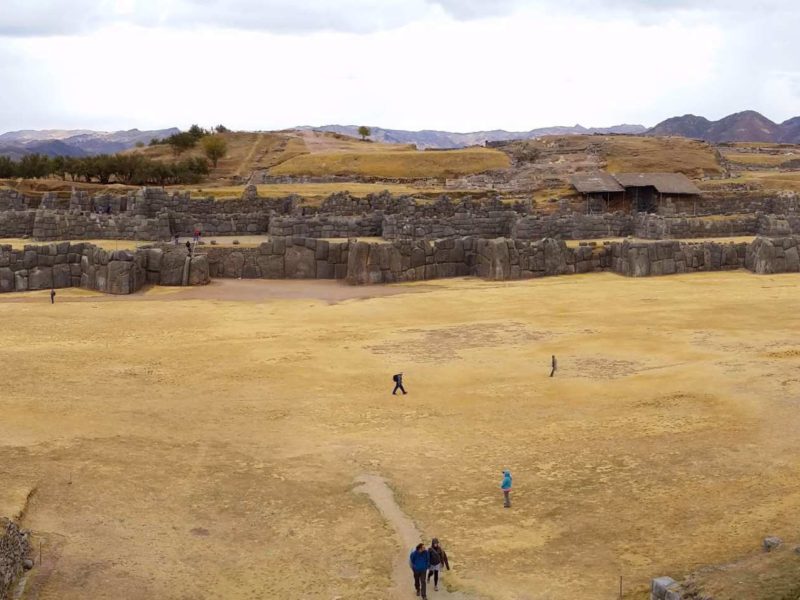
The interlocking stones of Sacsayhuaman have helped the plaza survive devastating earthquakes.
Cusco was once the capital of the Incan Empire and a large centre during Spanish colonial rule. The city has retained archaeological and architectural elements from its complex history, meaning there is so much to explore.
Be careful to leave enough time at the end of your trip to really enjoy it. You could very easily spend a week here and still have things to do every day.
When you have soaked up Cusco, head out on a tour of the Sacred Valley or stay over in Ollantaytambo, home to a massive Incan fortress and a great base for exploring the valley.
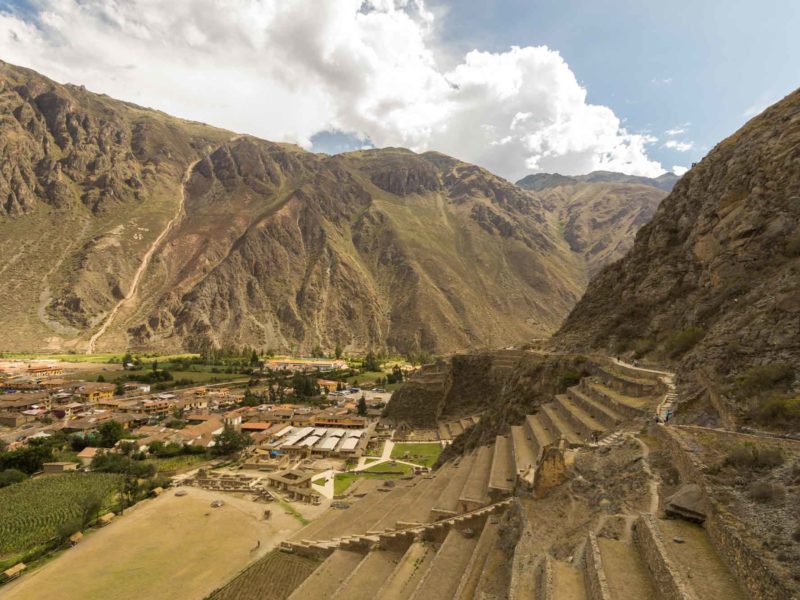
Ollantaytambo is a popular starting point for the Inca Trail trek to Machu Picchu.
This itinerary sees you saving the best for last – the purpose for most people’s trips: Machu Picchu. The most efficient way to get to the ancient Incan citadel is to take the train.
While expensive, this method will save you a lot of time as the alternative involves multiple busses and a long walk; alternatively, consider hiking the four-day, famed Inca highway, the Inca Trail instead.
Have a day exploring the ruins and then either spend the night in the nearby town of Aguas Calientes or head back to Cusco.
The bus back to Lima is a long one, so if you can afford the flight back I would recommend it.
The bottom-line: And then that’s it! It’s a lot to fit into a month but you’ll really have covered some ground and made the most of your trip thanks to this one-month South America backpacking route.
One-month South America travel itinerary: Colombia
If I had one month to travel in South America, I would choose to spend it in Colombia. It is fun, beautiful and rich in history. This trip will show you the sights and leave a lot of room for enjoying the culture of this colourful country.
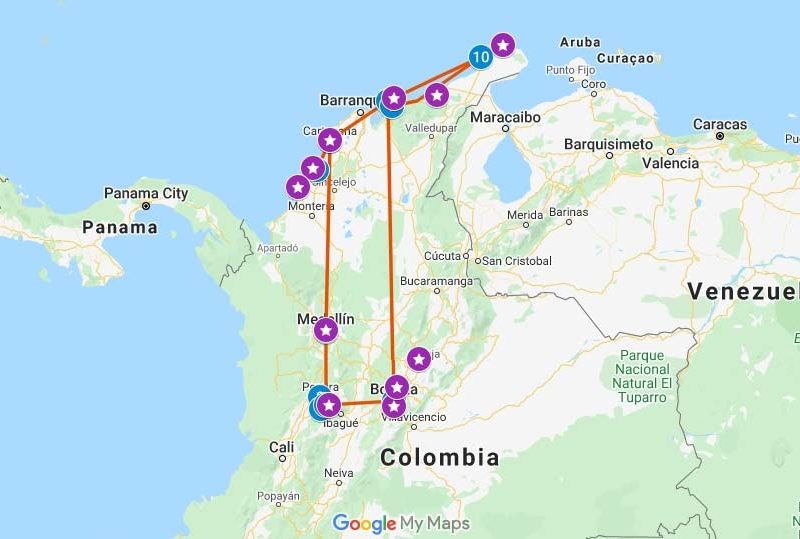
Click the image for an interactive Google Map for this itinerary
Seriously: Colombia should be on every backpacker’s South America wish list!
The two-week Colombia itinerary above can easily be extended to become one month in the country. Once you have completed this two-week route and ended up in Cartagena, spend the extra two weeks on the Caribbean coast.
The northern coast is the beautiful, picture-perfect shoreline of your beach holiday dreams. As you head east along the coast the distances between towns are small and easily crossed by local bus.
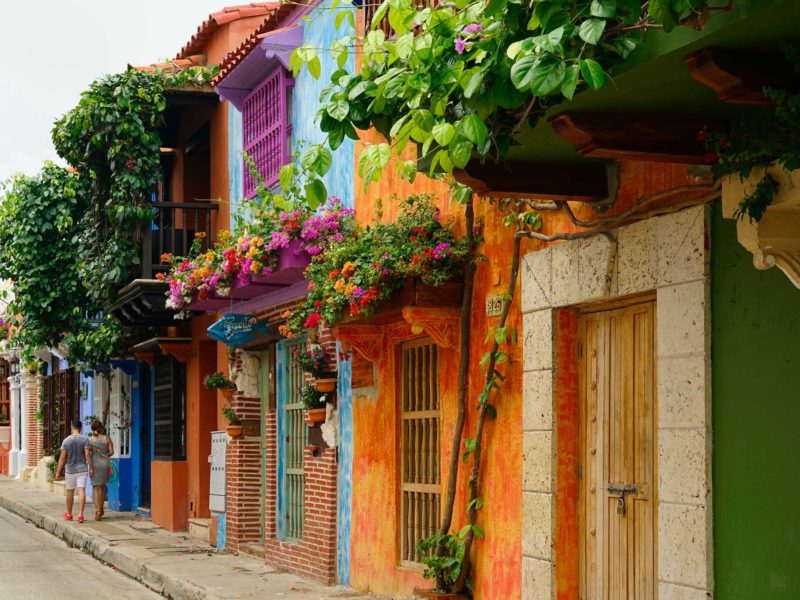
The colorful streets of colonial Cartagena Columbia.
Week Three
Now you’ve explored central Colombia and made it to Cartagena, you have a number of options of where to go next. If some relaxation is what you are after, consider visiting the San Bernardo islands.
Located only an hour’s boat ride from the mainland, this island is also home to the marvellous Casa En El Agua, an eco-hostel built as an island in a national park.
Otherwise there’s Isla Fuerte, once a hiding place for pirates and drug smugglers, which is now filled with a sleepy village, many donkeys and great open-air bars.
If relaxation doesn’t strike the right tone for you, instead, from Cartegena head east up the coast to Santa Marta for some scuba diving and to use it as a base for visiting the surrounding areas.
Just down the road is the world-famous Tayrona National Park, a gorgeous protected area where the Sierra Nevada de Santa Marta mountains meet the coast. Palm-covered coves, thick rainforest, lagoons and white sand beaches support rich biodiversity. You can hike, swim and even stay overnight in this expansive park.
Week Four
If the Caribbean heat is getting to you, take a jeep from Santa Marta to the cooler climate of Minca, a jungle mountain village with some incredible hostels and waterfall hikes.
Your next stop should be Palomino, a beachfront town of cocktails and relaxation. You can tube down the river and swim offshore from long, sandy beaches.
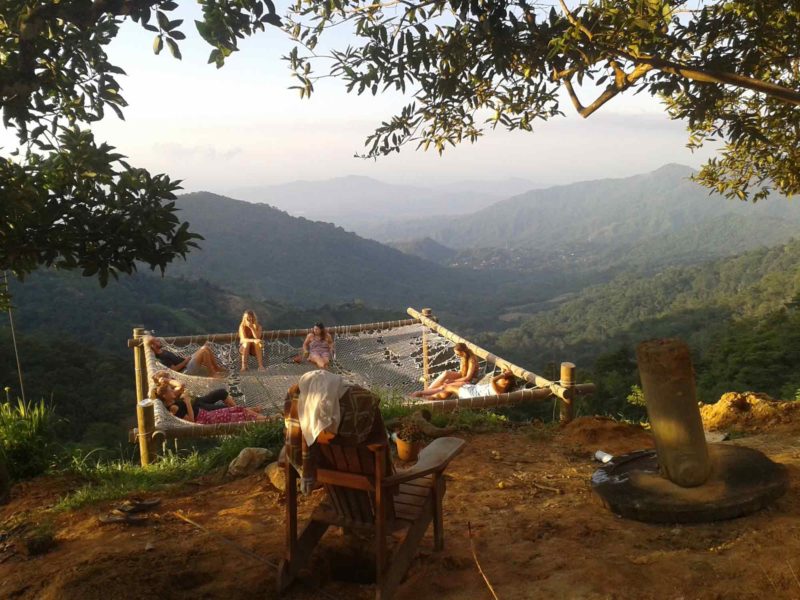
Relax in the cool mountains surrounding Minca Colombia.
Continue on towards the desert in the North Eastern corner of Colombia. A great stop along the way is Los Flamencos Natural Reserve to see flamingos and other bird life. The last destination is Cabo de la Vela, a beach town where it almost never rains – it is in the desert after all.
Learn how to kitesurf and dine on the local langostino, a type of crayfish. Take a day trip up to Punta Gallinas, the northern tip of South America, and see the beautiful dunes of northern coast.
From there, bus back to Santa Marta and fly back to Bogota to catch your flight home.
The bottom-line: This varied backpacking travel itinerary is for someone looking for a rich combination of history, beaches – and plenty of fun!
One month in Patagonia
We’re obsessed with Patagonia on this website, and we’ve got plenty of itinerary ideas to sink your teeth into.
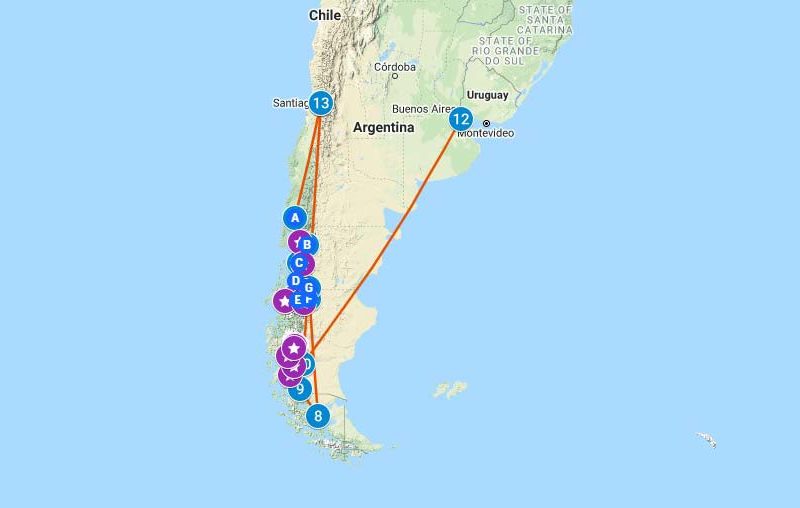
Click the image for an interactive Google Map for this itinerary.
Week One
Fly from Santiago south to Puerto Montt, where you can pick up a hire car (get the low-down on driving in Patagonia before you do).
Drive south down Carretera Austral, South America’s finest road trip and stop to hike and admire the landscapes of lush, temperate rainforest, steaming volcanoes and pristine fjords.
Spend a few days trekking and relaxing in hot springs in Parque Nacional Pumalín before driving southeast to Futaleufú to experience the best white-water rafting in South America.
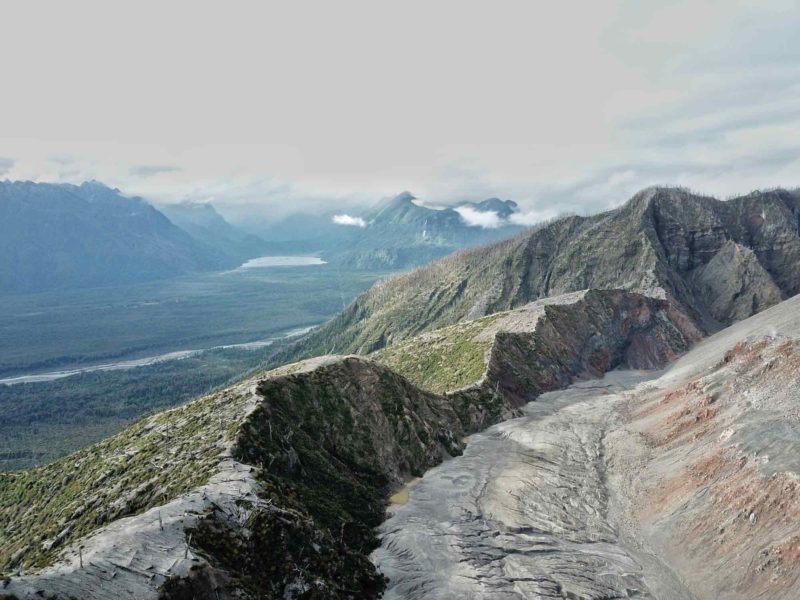
Pumalin is part of the largest national park in South America.
Continue the drive south via Puyuhuapi, to see the truly remarkable Queulat Hanging Glacier, and then on to Parque Nacional Cerro Castillo, for a day or even four-day traverse through one of Patagonia’s newest national parks.
Covid-19 update: You MUST make a reservation in order to visit Parque Nacional Queulat where the Queulat Hanging Glacier is located. You can do this on this website, but you will need to pay in cash (bring small notes) upon arrival. You can only enter the park between 9:00am and 14:30pm (you can stay within the park until 16.30pm) and you must bring your reservation code on your phone or printed off to show at the park entrance.
Covid-19 update: The Cerro Castillo Traverse is now fully open. The Cerro Castillo Traverse is partially closed, due to a lack of CONAF staff. Currently, you can still hike the Sendero Mirador Laguna Cerro Castillo and the path from Acceso Estero Parada to Laguna Duff (see the map here for details). This information was correct as of January 2022.
Week Two
Continue on your way south, cruising along this southern highway to reach Puerto Río Tranquilo where you can take a speedboat or paddle a kayak out to the candy-cane marble caves.
Spend an extra day either ice trekking on the Exploradores Glacier or – if your budget is big enough – taking a day cruise out to the Glaciar San Rafael.
Do a loop of the mesmerizingly blue waters of Lago General Carrera, stopping at Chile Chico to visit the northern sector of Parque Nacional Patagonia, Sector Jeinimeni, for shorts hikes and outstanding scenery, before taking the boat north across the lake and return your car to Balmaceda airport.
Week Three
Fly from Balmaceda to Punta Arenas and take the bus north to Puerto Natales, where you can organize your equipment and food for the four- or five-day W trek (or, if you’ve got more time, the 10-day circuit) in Parque Nacional Torres del Paine.
If you’ve got more time, board the 32-hour TABSA ferry from Punta Arenas to Puerto Williams, the world’s southernmost settlement ($151,110 CLP ($196 USD).
It sails through the Beagle Channel and its most dazzling section: Glacier Alley – a stretch of water lined by hanging tidewater glaciers. Very expensive cruise ships normally ply this route; instead, the Yaghan ferry is the local form of transport (and priced accordingly!).
From Puerto Williams, which is home to plenty of hiking, you can cross the Beagle Channel and spend a day or two in Ushuaia before flying up to El Calafate.
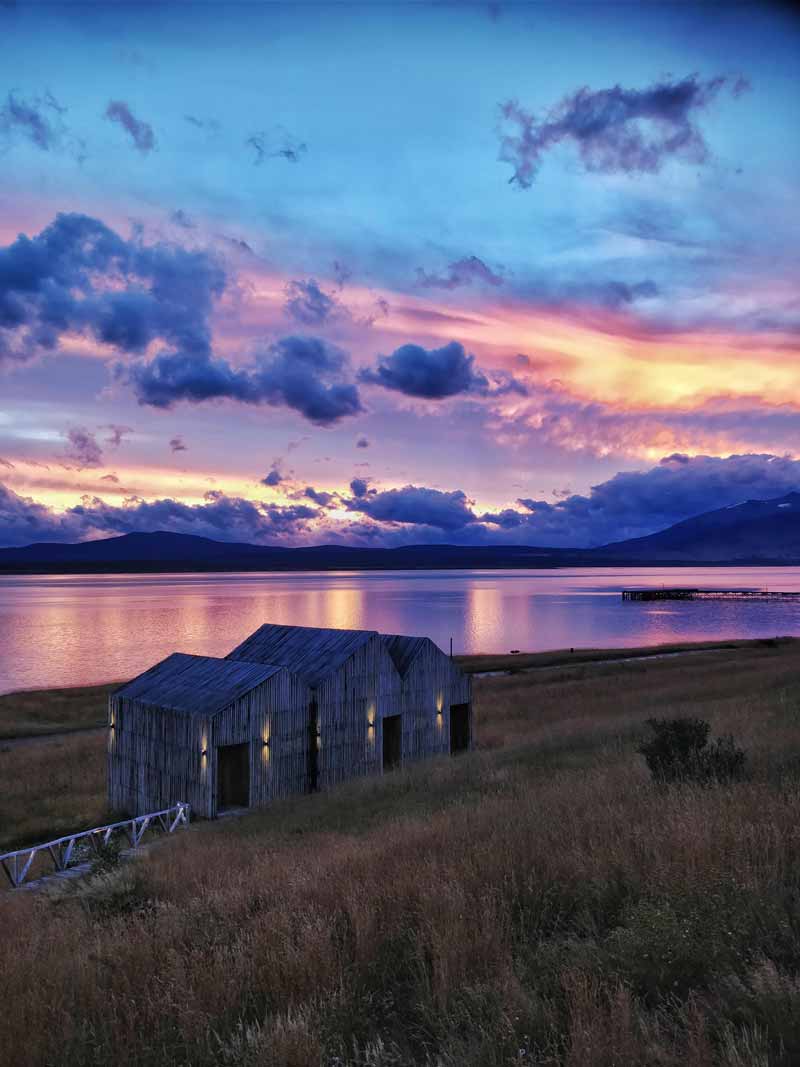
Puerto Natales is the starting point for some of the best hiking in Chile.
Week Four
When you’ve accomplished the challenge of hiking in the remote Patagonia scenery near Puerto Natales, board a bus across the border to El Calafate, a small town in striking distance of the awe-inspiring Glacier Perito Moreno.
Take the public bus for a day tour out to the boardwalks that sit beneath the glacier’s snout.
Back in El Calafate, take a bus north to El Chaltén, Argentine Patagonia’s hiking capital.
Set on the very outskirts of Parque Nacional Los Glaciares, this town makes a great place from which to approach a range of day hikes, including to Laguna de los Tres and Laguna Torre, both of which boast splendid mountain reflections in sparkling glacial lakes.
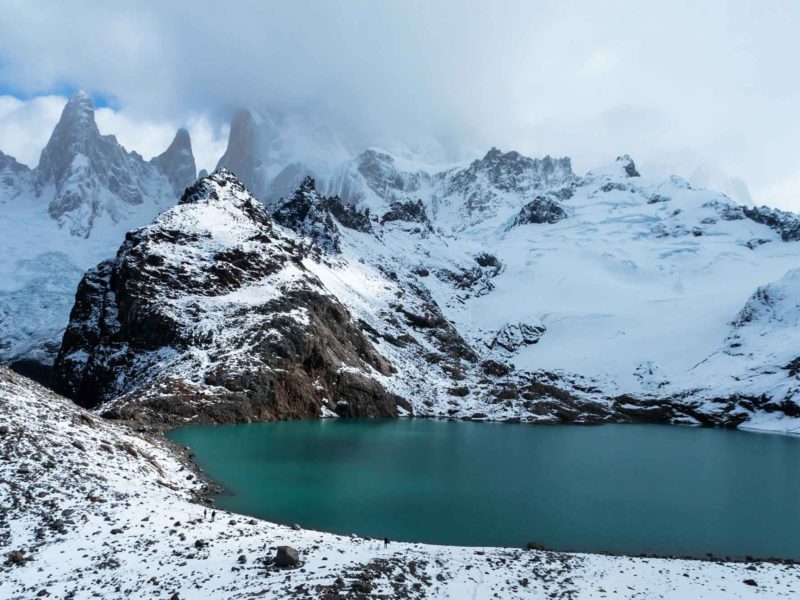
Laguna de los Tres is a rugged but beautiful day hike from El Chalten
If you’ve more time and are an experienced hiker, embark on the four-day Huemul trek, which takes you in a loop of the park with stunning vistas of the Southern Patagonia Ice Field.
Return by bus to El Calafate and fly to Buenos Aires or continue on from here back to Santiago.
How to adapt this itinerary: If you’ve got less time, it is possible to explore Patagonia in just a one- or two-week vacation. For more information, we’ve gone into more depth about visiting both the Chilean and Argentine sides of this region, including the best national parks, road trip destinations and most remote areas in this comprehensive post about Patagonia backpacking itineraries.
Source https://www.southamerica.travel/south-america/travel-info/best-time-to-visit
Source https://internationalliving.com/south-america-travel-itinerary-trl/
Source https://worldlyadventurer.com/south-america-backpacking-routes/